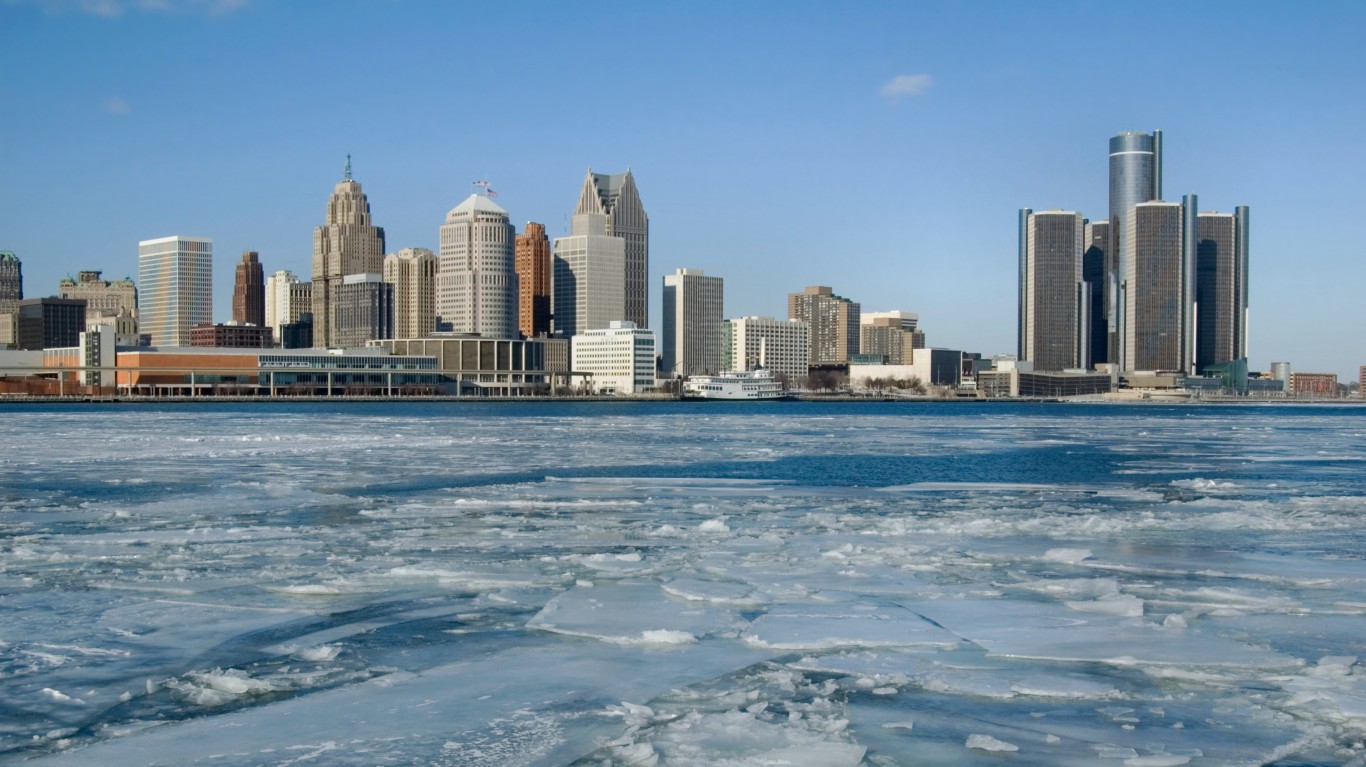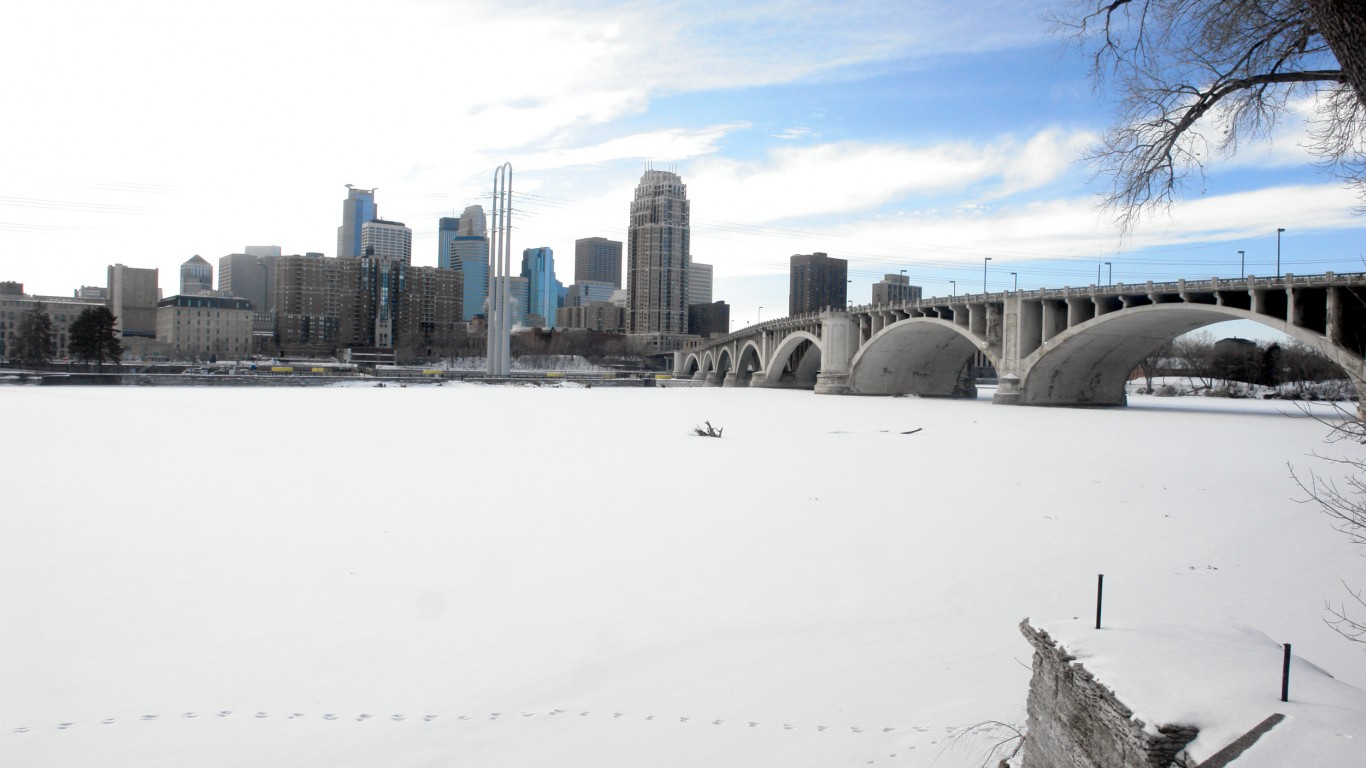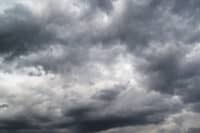
While the U.S. has suffered damaging wildfires, droughts, floods, and storms throughout its history, these have generally been less deadly and destructive than weather events in many regions of the world.
Typhoons and Hurricanes regularly batter Southeast Asia and South America, with torrential rains triggering landslides capable of burying villages. Droughts, and the resulting famines, regularly plague many African nations. Storm surges in the Pacific wash away entire communities, and sometimes the land itself. Even Europe has suffered terribly as the heat waves of recent years have killed the elderly by the thousands and dried up crops and livelihoods.
To identify the five deadliest natural disasters in each global region since 1970, 24/7 Wall St. reviewed total deaths from natural disasters around the world from the World Meteorological Organization’s report, “WMO Atlas of Mortality and Economic Losses from Weather, Climate and Water Extremes (1970–2019).” The report analyzed natural disasters recorded by EM-DAT, the International Disaster Database.
Because of its focus on natural disasters that highlight impacts of specific weather, climate, and water hazards, the report only includes meteorological (storm, extreme temperature), hydrological (flood, landslide), and climatological (drought, wildfire) disasters and excludes biological (e.g. epidemic), geophysical (e.g. earthquake), and extraterrestrial (e.g. meteoroids) disasters.
The worst disasters tend to hit poorer countries the hardest, where housing is ramshackle, access roads and bridges vulnerable, and preparation for disaster spotty at best. Our own sense of invulnerability — though somewhat shaken in recent years — can be attributed in part to our relative wealth, allowing for well-constructed buildings and infrastructure and strategies for minimizing the impact of flooding and other disasters. (These are the U.S. cities where hurricanes would cause the most damage.)
It is now recognized that natural weather disasters are becoming worse, mainly attributable to climate change, making vulnerable nations ever more so, and the more privileged nations fearful. Our future safety in the face of these calamitous events depends on our willingness and ability to slow climate change, adapt to the inevitable climate disasters ahead, and help the poorer regions of the world survive. (Here is every major U.S. city’s worst weather disaster.)
Click here to see the deadliest natural disasters of all time
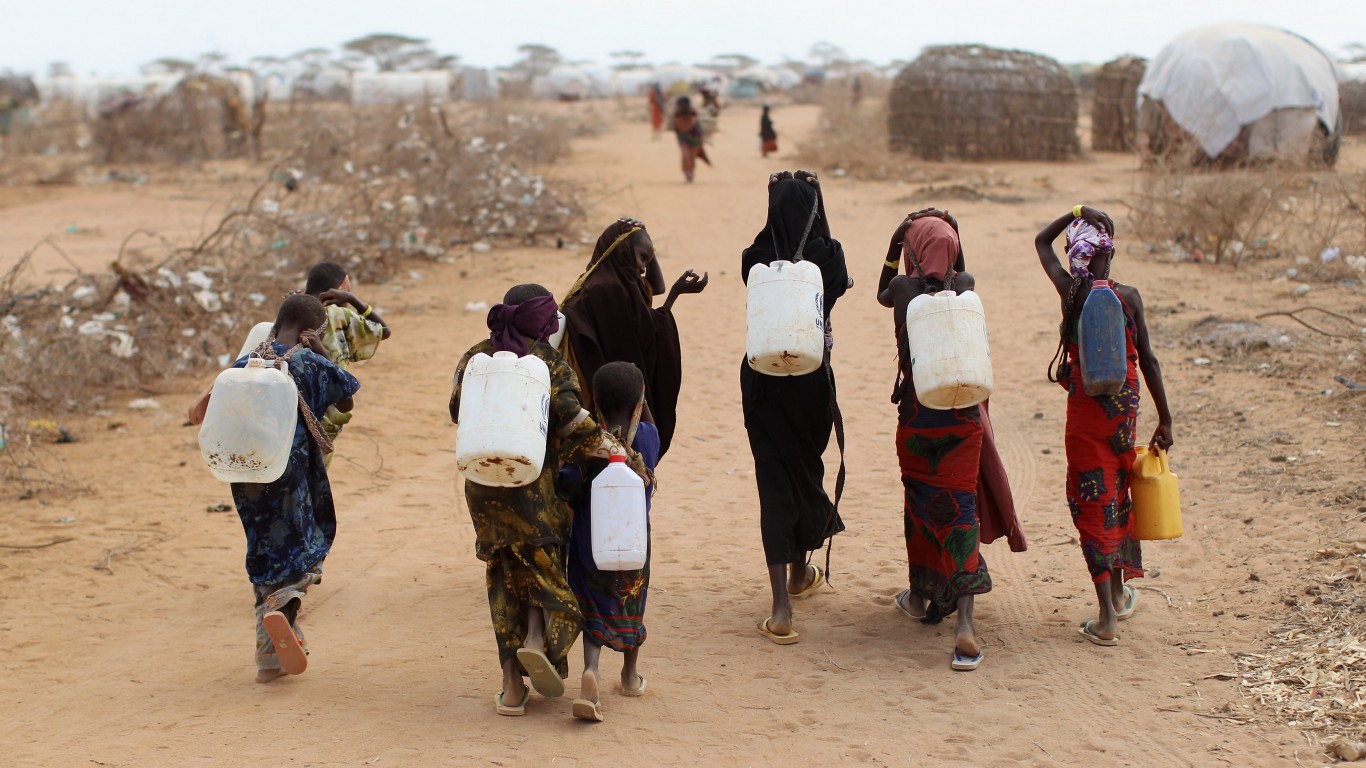
5. Drought
> Region: Africa
> No. of deaths: 20,000
> Year: 2010
> Country: Somalia
Strong La Nina conditions prevailed in East Africa in 2010, creating the worst drought in 60 years and leading to extreme food shortages in 2011. The crisis was worst in Somalia, where the 2010 harvest produced 20% of the usual yield and planting was delayed in 2011 because of late, inadequate rain. By July of that year 11.5 million people in Kenya, Somalia, and Ethiopia were in need of food aid. According to a U.N. report, a quarter of a million people in Somalia, half of them children under 5, died from the famine that persisted through April of 2012.
[in-text-ad]
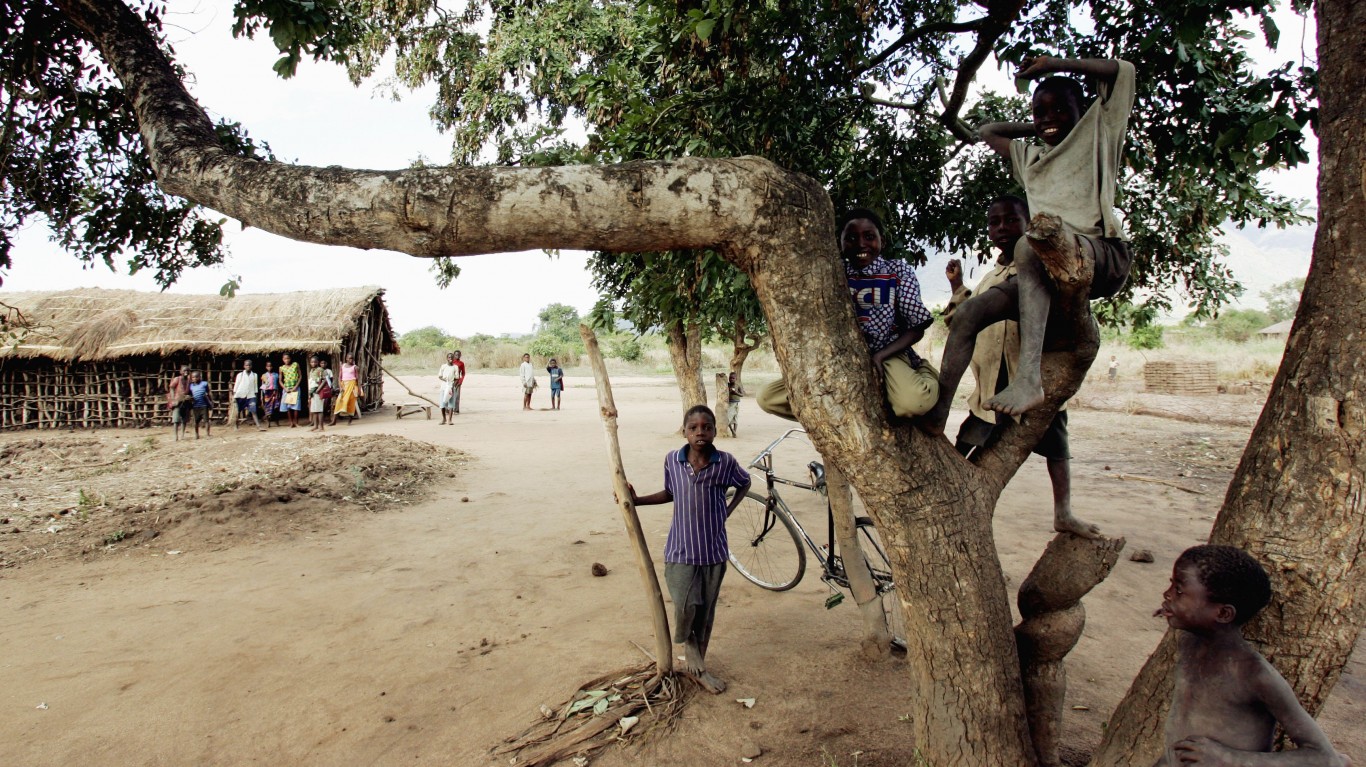
4. Drought
> Region: Africa
> No. of deaths: 100,000
> Year: 1981
> Country: Mozambique
Southern Africa is particularly vulnerable to natural disasters, and Mozambique has been hit the hardest, with 53 natural disasters in the past 45 years. In 1981, with widespread drought in the region, the crisis in Mozambique was the most dire, made worse by civil unrest and flooding that persisted after the drought. The drought reduced harvests by 80%, while guerrilla fighters disrupted relief efforts. Severe flooding in 1984 and 1985 destroyed crops and extended the crisis. All told, up to 100,000 people died from the famine conditions.
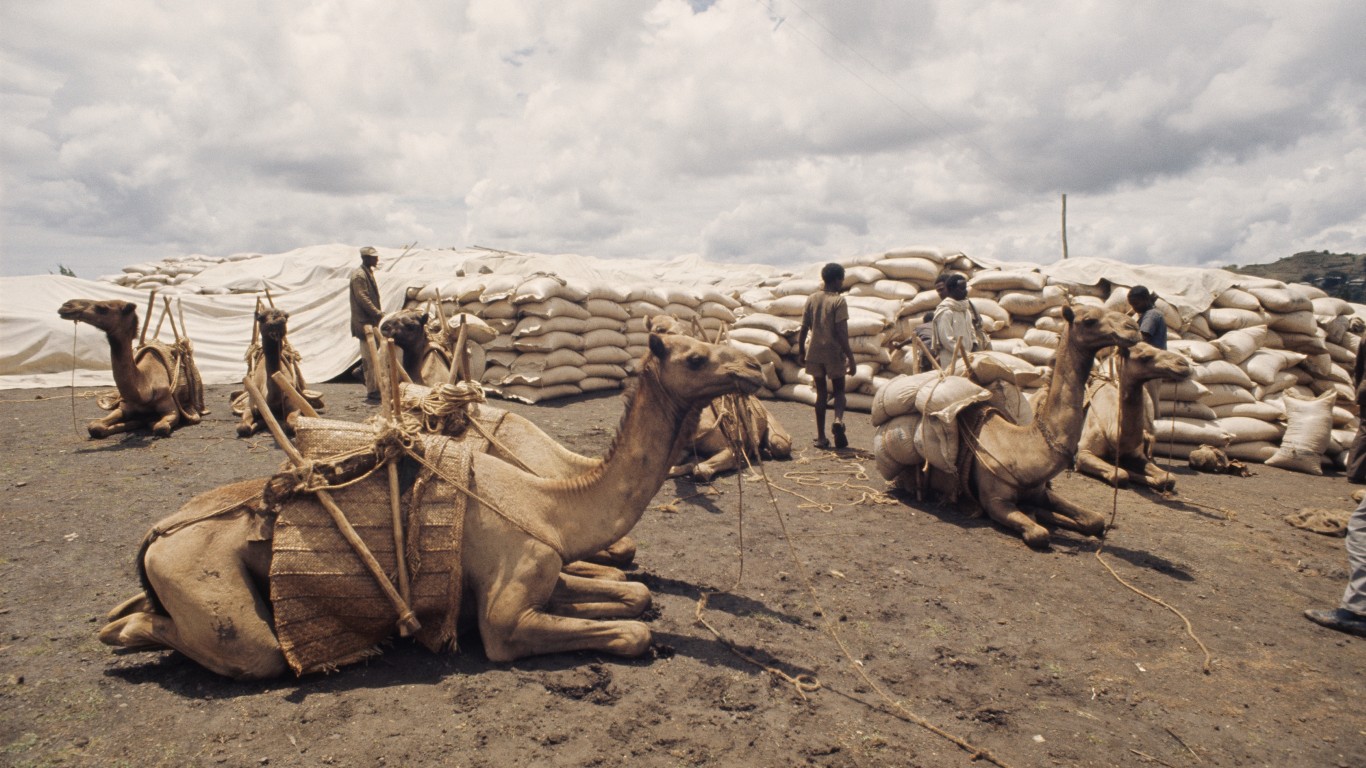
3. Drought
> Region: Africa
> No. of deaths: 100,000
> Year: 1973
> Country: Ethiopia
The crisis that accompanied the 1973 drought in Ethiopia began in previous years, with low crop yields and a population that was already hungry. Still, even in the year of the drought and ensuing famine, the rest of the world was largely unaware and slow to react. By September, between 50,000 and 100,000 people had died, and up to 1.7 million people were in need of food aid. The event inspired improvements in aid programs and strategies.
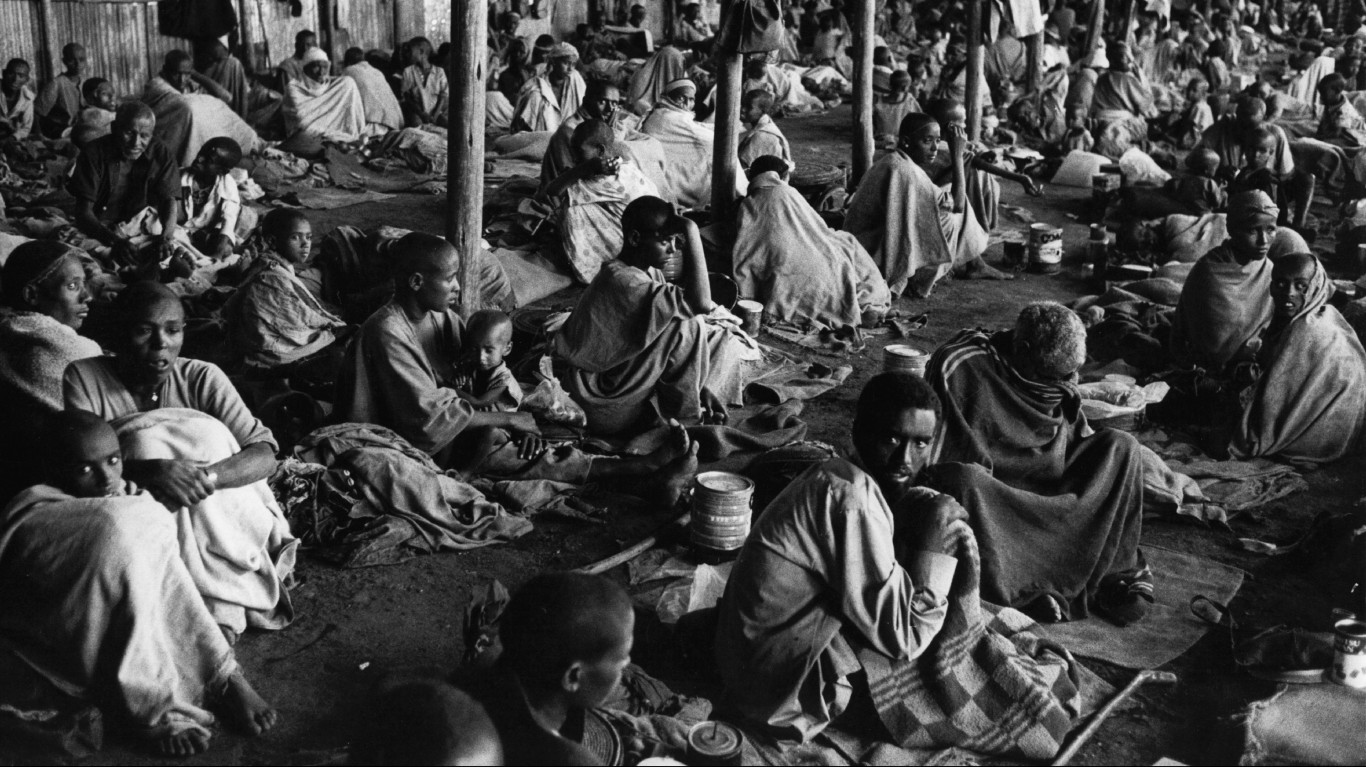
2. Drought
> Region: Africa
> No. of deaths: 150,000
> Year: 1983
> Country: Sudan
Sudan has suffered from drought, usually followed by famine, throughout its history. Insufficient rainfall and an increasingly troubling process of desertification preceded the 1984 crisis, made worse by a failure of agricultural policy and lack of aid. In addition to the death toll of the ensuing famine, farmers and families were left hobbled and often displaced due to a loss of livestock, land, and other reserves, with the poorest communities suffering the most. Large segments of the preschool population, as measured in subsequent years, were found to be sick and malnourished.
[in-text-ad-2]
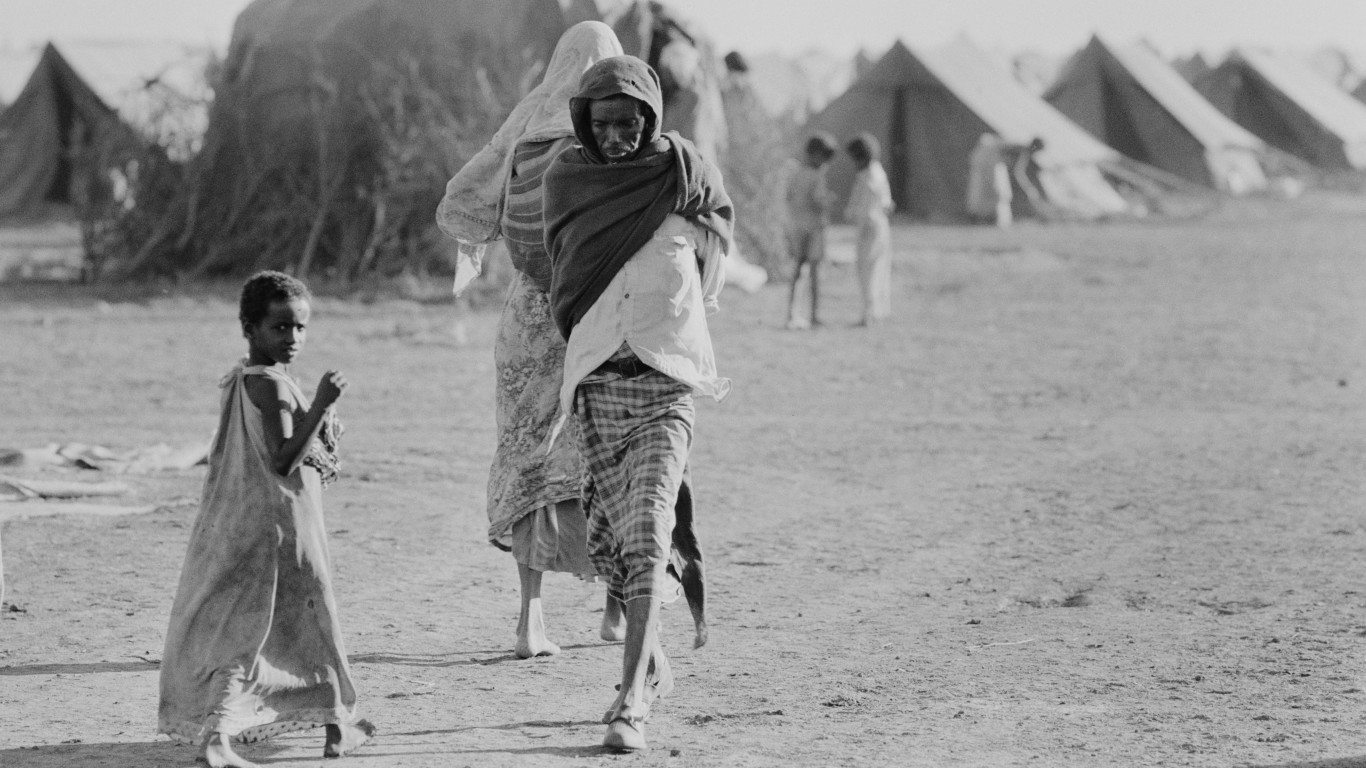
1. Drought
> Region: Africa
> No. of deaths: 300,000
> Year: 1983
> Country: Ethiopia
In the years leading up to the 1983 drought and 1984 hunger crisis, Ethiopia’s population and economy were already suffering from low crop yields and civil war. By the summer of 1984, aid agencies were struggling to assist as thousands of people died and millions were threatened with starvation. International aid picked up as images of the famine reached the rest of the world. Concern for Ethiopia’s dire straits ultimately led to the simultaneous international rock concert, “Live Aid,” headlining such acts as Elton John, Madonna and U2.
The assistance and alleviation of the suffering was accompanied by new strategies for reducing the impacts of disasters by, for example, moving hundreds of thousands of people to areas where services are more accessible.
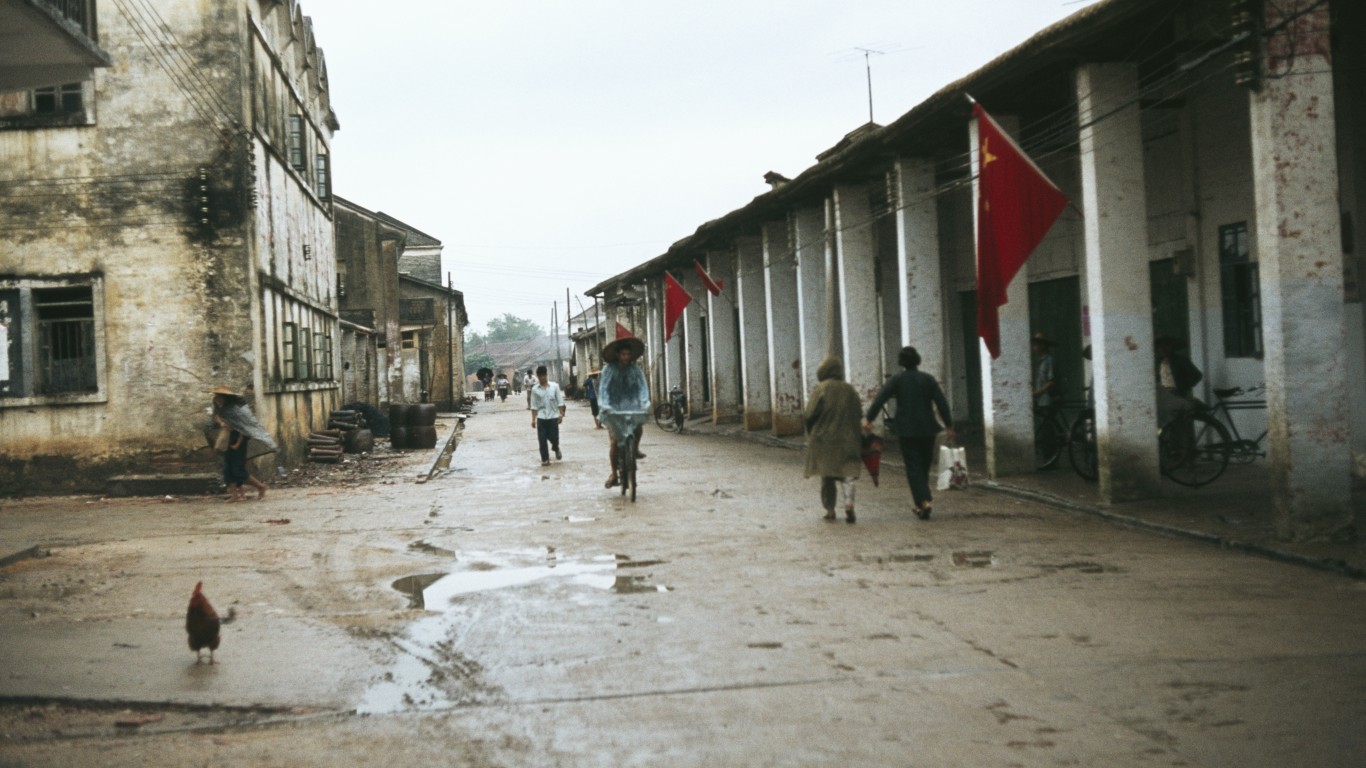
5. Flood
> Region: Asia
> No. of deaths: 20,000
> Year: 1975
> Country: China
In August of 1975 Typhoon Nina hit Hunan Province in China with unprecedented torrential rains. Forty inches fell the first day, causing the immense Banqiao dam to break. The collapse of the dam, the largest in China’s flood control system, sent a wall of water 40 feet high and 7 miles wide into the countryside at a rate of 30 miles per hour. The typhoon and extreme flooding caused the failure of 61 other dams and reservoirs and the loss of up to 26,000 lives. In the aftermath of the flood, at least 145,000 more people died from epidemics caused by contaminated water or disaster-related famine.
[in-text-ad]
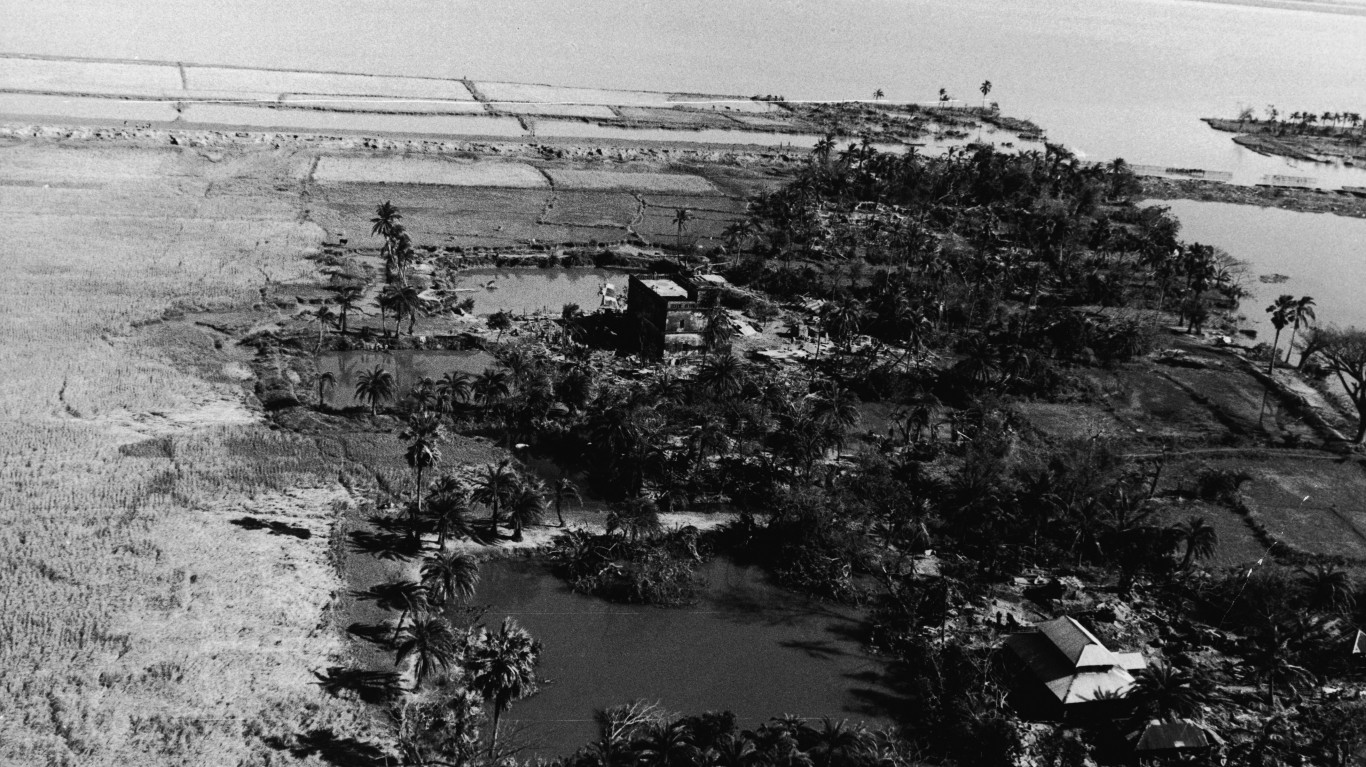
4. Flood
> Region: Asia
> No. of deaths: 28,700
> Year: 1974
> Country: Bangladesh
Still emerging from the impacts of the Bhola Cyclone of 1970 and the liberation war of 1971, Bangladesh was inundated with massive monsoon flooding throughout the summer of 1974, resulting in an estimated 28,700 deaths. One disaster followed another, as the ensuing crop failures and famine further devastated the country, exacerbated by poor food distribution and other market failures. Because birth and death records are notoriously spotty, estimates of the final death toll vary greatly, ranging from the official government estimate of 27,000 to unofficial estimates as high as 1.5 million and 10 million.
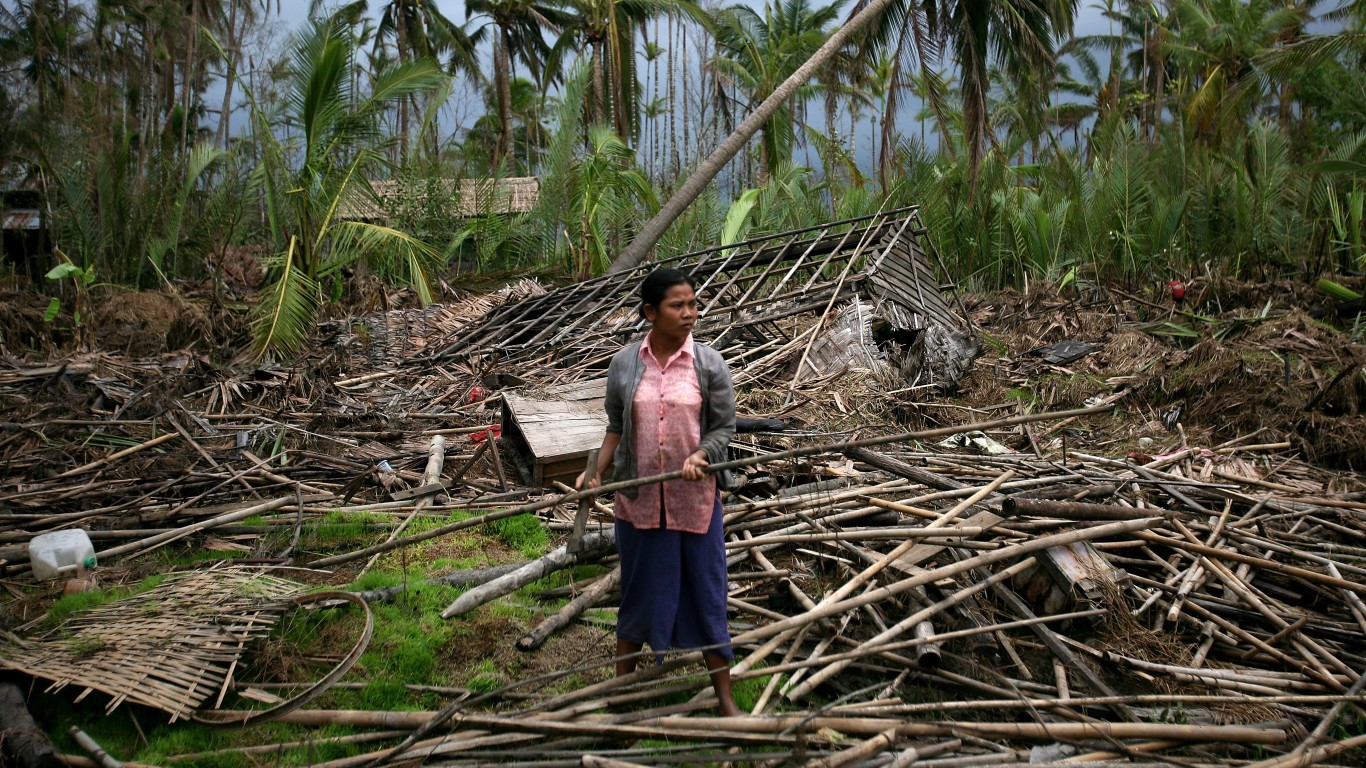
3. Storm (Nargis)
> Region: Asia
> No. of deaths: 138,366
> Year: 2008
> Country: Myanmar
Cyclone Nargis was a Category 4 storm when it hit the coast of Myanmar in May of 2008, causing a storm surge that killed nearly 140,000 people, though some believe that the government downplayed the death toll. The storm surge and high winds also caused $12 billion in damage and displaced 800,000 people. Recovery was hampered by the government’s resistance to international aid.
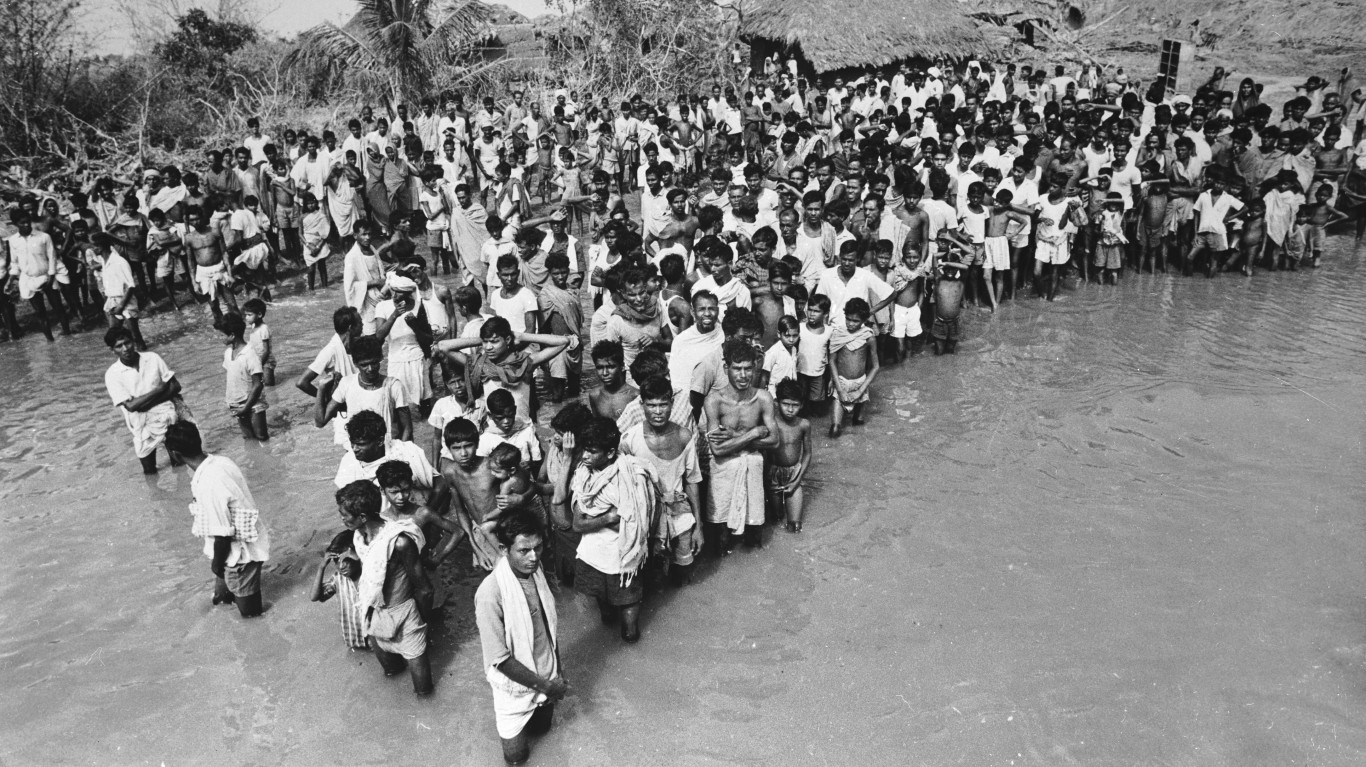
2. Storm (Gorky)
> Region: Asia
> No. of deaths: 138,866
> Year: 1991
> Country: Bangladesh
After the devastation wrought by cyclone Bhola in 1970, Bangladesh increased preparedness efforts, including the building of a few storm shelters along the coast. Still, the country was ill-prepared when cyclone Gorky hit in April of 1991, and once again, Bangladesh suffered immense damage and loss of lives, mostly as the result of a 15 foot storm surge. In addition to the death toll, villages were eradicated, crops ruined, and up to 10 million people lost their homes.
Since the 1991 storm, Bangladesh has built hundreds of raised storm shelters along the coast and has embarked on a reforestation project designed to prevent damage from flooding.
[in-text-ad-2]
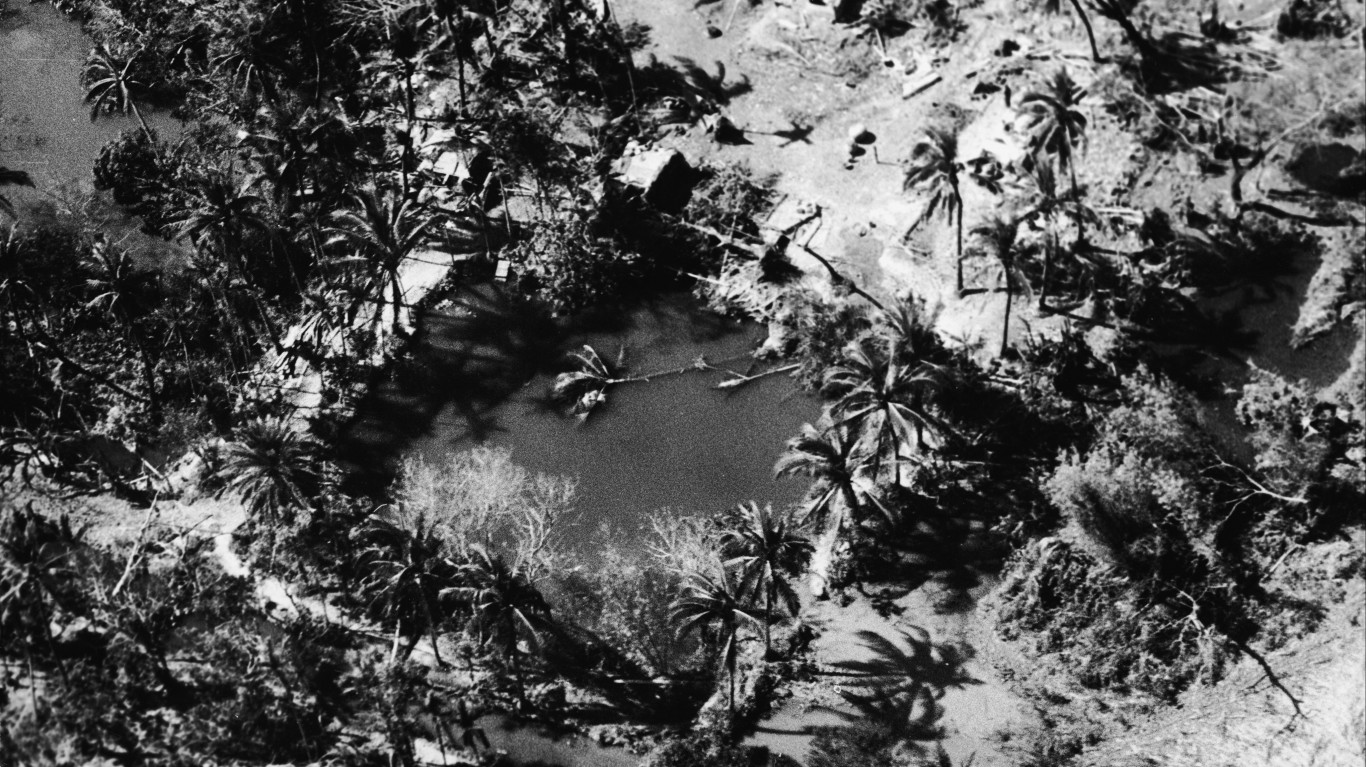
1. Storm (Bhola)
> Region: Asia
> No. of deaths: 300,000
> Year: 1970
> Country: Bangladesh
In November 1970, Bhola, the most deadly cyclone in recorded history, rose out of the Bay of Bengal and slammed Bangladesh — then East Pakistan — with brutal force, killing between 300,000 and 500,000 people. Deaths were mainly attributable to a storm surge that overwhelmed the coast, wiping out entire villages.
Anti-government protests in the wake of the disaster contributed to the political unrest and, ultimately, the war with India that led to Bangladesh’s independence in 1971.

5. Extreme temperature
> Region: Europe
> No. of deaths: 9,355
> Year: 2003
> Country: Germany
In the summer of 2003, Europe was devastated by a months-long heatwave that melted glaciers, fueled wildfires, and dried up crops. Record temperatures, 20%-30% higher than normal, are believed to be responsible for the death of 30,000 people, at least 7,000 of them in Germany.
Germany was fifth among the European countries to suffer crop loss, with deficits ranging from less than 10% for wheat and maize, to 15% for potatoes, and 30% for livestock fodder. Shipping was also affected due to low water levels in the Danube and Elbe rivers.
[in-text-ad]
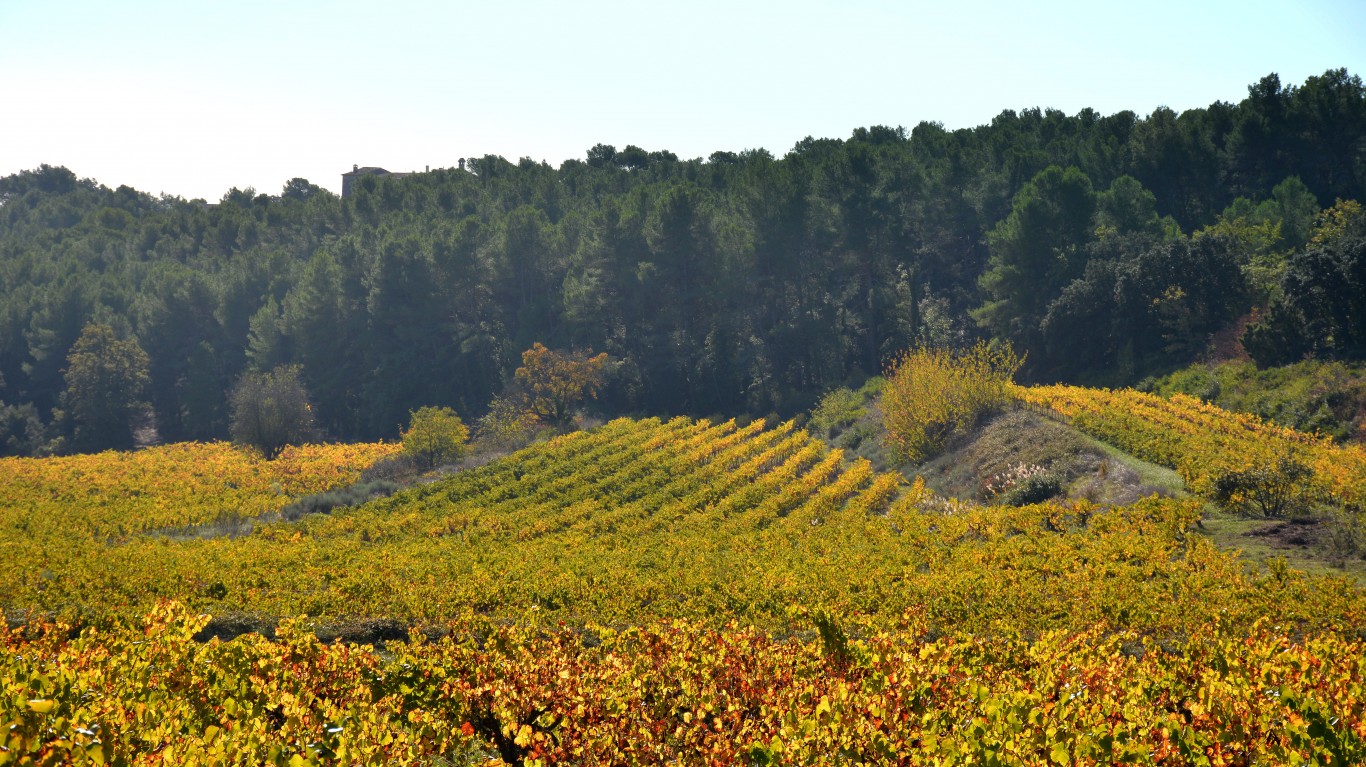
4. Extreme temperature
> Region: Europe
> No. of deaths: 15,090
> Year: 2003
> Country: Spain
Estimates of the number of deaths from the European heatwave in 2003 vary greatly. As explained by the Earth Policy Institute, deaths from exposure to heat are not necessarily recorded as such, so initial tallies are generally smaller than those gleaned from a later assessment. Thus Spain’s initial death toll was set at only 141, until further analysis by Spain’s National Statistics institute raised the estimate to 12,963 based on excess deaths in the summer of 2003. Other organizations have arrived at different numbers based on similar analysis.
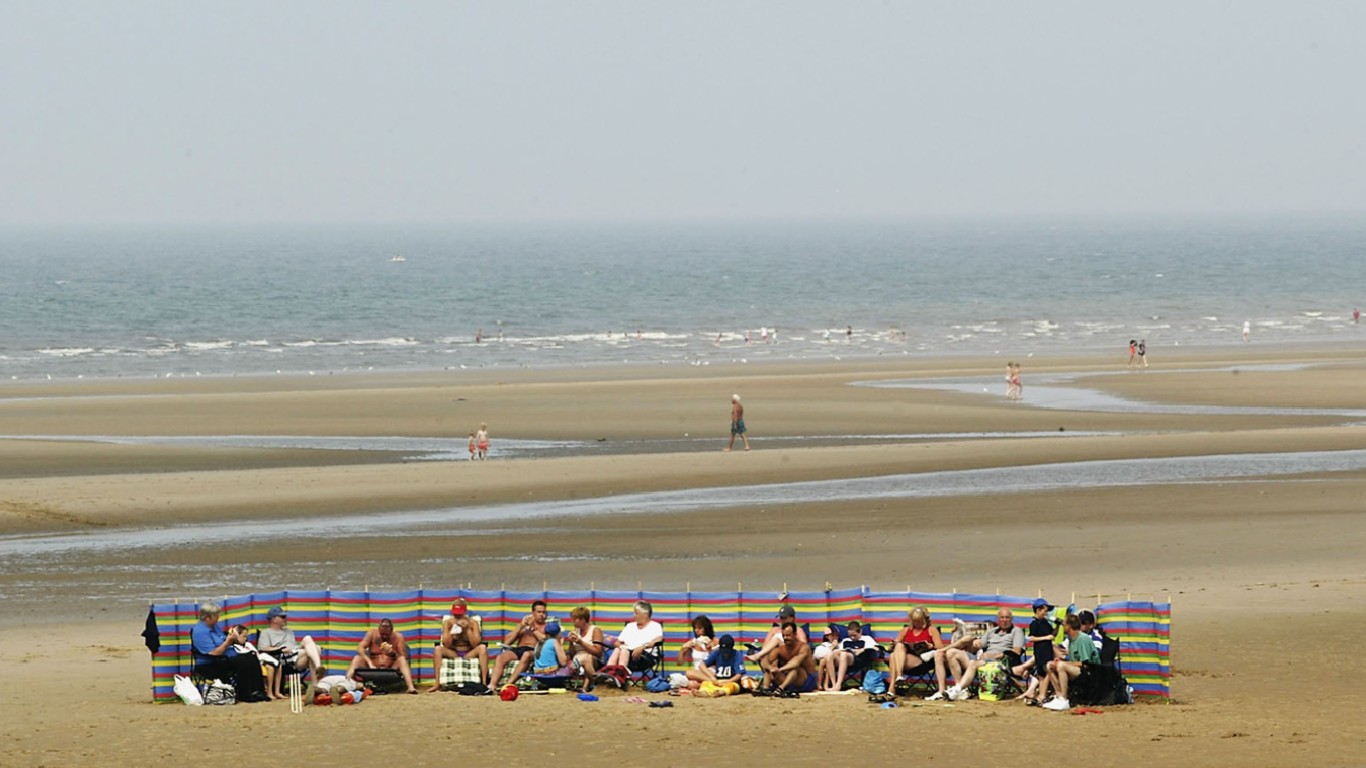
3. Extreme temperature
> Region: Europe
> No. of deaths: 19,490
> Year: 2003
> Country: France
France was among the nations hardest hit by the 2003 heatwave. France does not usually experience hot summers, but temperatures remained at 99 degrees Fahrenheit in some areas for more than a week in August.
Along with other European countries, France experienced serious crop loss and wildfires, but it also had a unique problem with its energy production. France derives 75% of its energy from nuclear power and is the only European exporter of energy. Because power plants require cooling water from rivers, which were low during the heatwave, and because the water could not always cool down enough to be returned to the rivers, many power plants had to be shut down, and energy exports were reduced by half.

2. Extreme temperature
> Region: Europe
> No. of deaths: 20,089
> Year: 2003
> Country: Italy
In the summer of 2003, temperatures in Italy exceeded average temperatures by 16 degrees, with high humidity intensifying the human suffering. Initial estimates of resulting deaths were found to be too low by orders of magnitude upon further analysis in 2005, when the death toll was set at over 20,000. As many as 91% of those who died from the heat were found to be over 75 years of age, prompting Italian officials to focus on surveillance of the most vulnerable in preparing for future heat events.
[in-text-ad-2]
1. Extreme temperature
> Region: Europe
> No. of deaths: 55,736
> Year: 2010
> Country: Russian Federation
In the summer of 2010, temperatures in Russia approached 104 degrees Fahrenheit, spawning forest fires and peat fires that blanketed the capital with acrid smoke. More than 56,000 Russians died as a result of the heat and smoke, and 60 people were known to have died in the fires. Critics blamed Prime Minister Vladimir Putin for the disaster, citing his gutting of forest management practices.
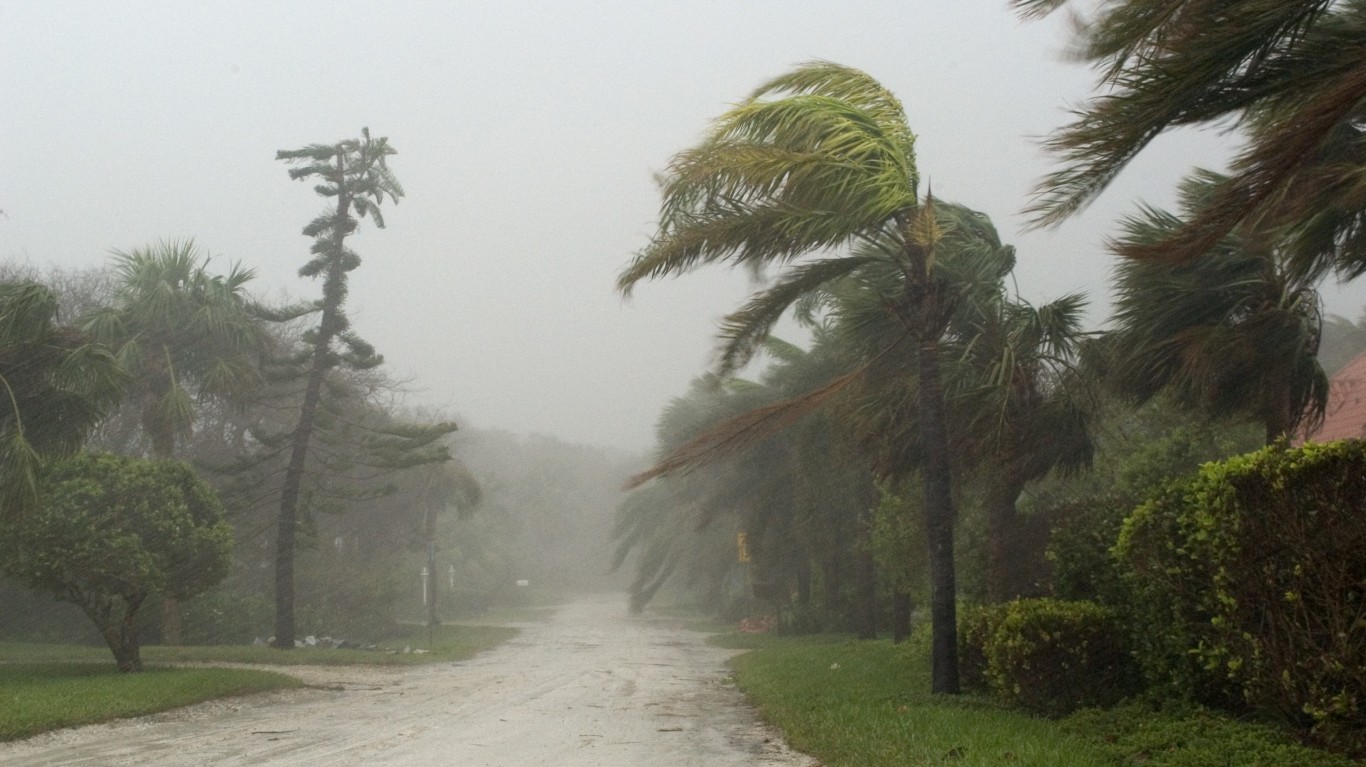
5. Storm (Jeanne)
> Region: North America, Central America and the Caribbean
> No. of deaths: 2,754
> Year: 2004
> Country: Haiti
The deadliest hurricane since Mitch in 1988, Jeanne was a Category 3 storm that crashed through the Caribbean, making landfall in Florida and causing flooding northward to Virginia. It was particularly devastating in Haiti, where it dropped 13 inches of rain in the northern mountains and valleys, causing destructive flooding and mudslides. More than 3,000 people died, mainly in the coastal city of Gonaïves, which saw the greatest destruction. Flooding from the storm also destroyed the rice and fruit crops in the region known as Haiti’s breadbasket.
[in-text-ad]
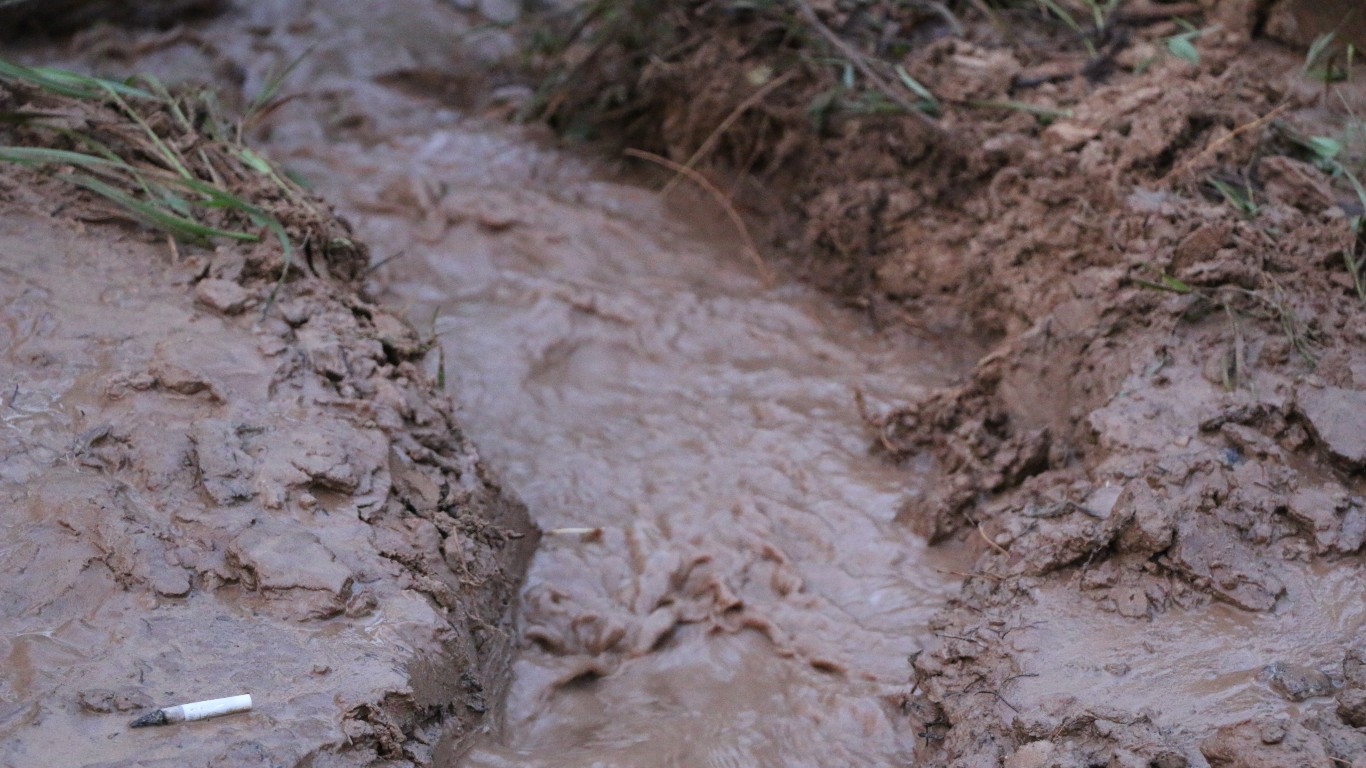
4. Landslide
> Region: North America, Central America and the Caribbean
> No. of deaths: 2,800
> Year: 1973
> Country: Honduras
A landslide in Honduras on Sept. 20, 1973, resulted in about 2,800 deaths, one of the more deadliest landslides worldwide.
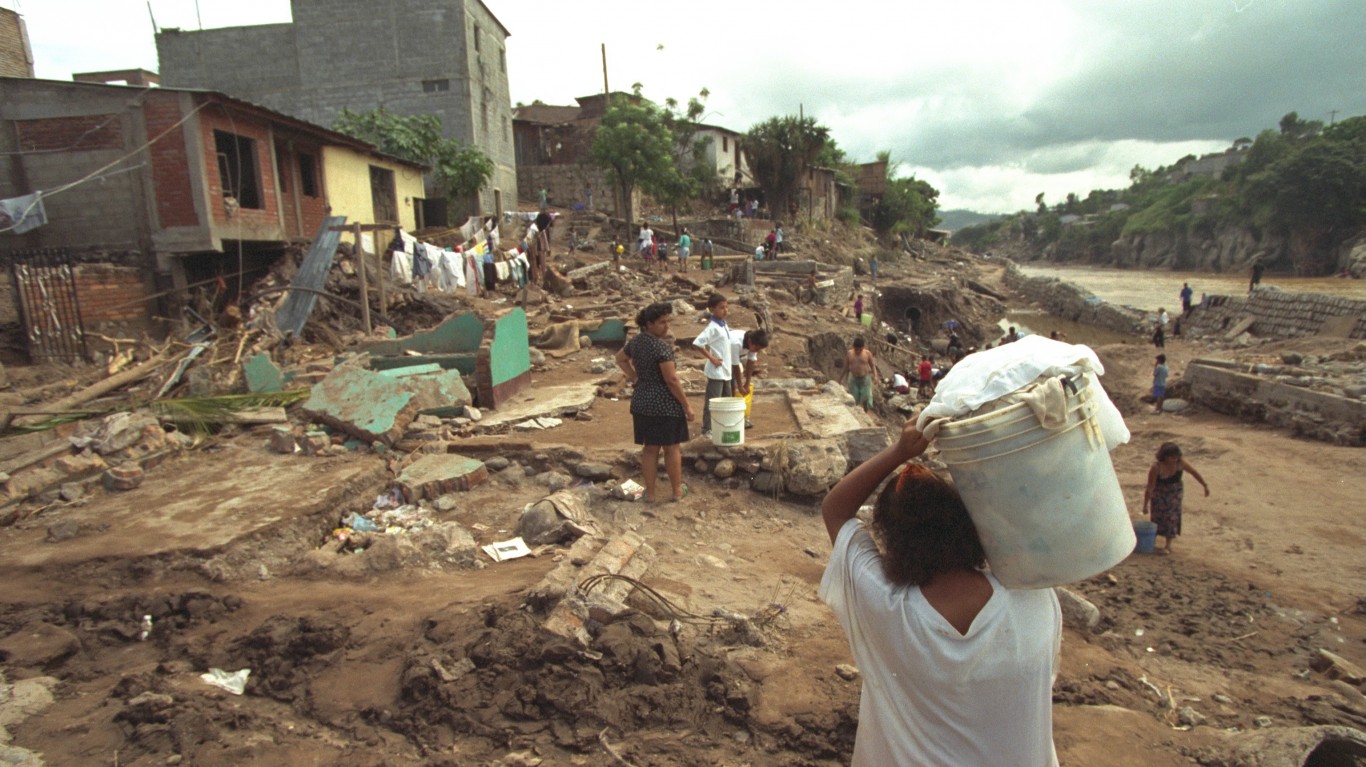
3. Storm (Mitch)
> Region: North America, Central America and the Caribbean
> No. of deaths: 3,332
> Year: 1998
> Country: Nicaragua
While Nicaragua was not hit as hard as Honduras by Mitch, a devastating Category 5 hurricane, the country suffered widespread destruction, with heavy rains, flooding, and landslides. A single mudslide from the La Casitas Volcano buried several communities, killing around 2,000 people. A total of over 23,000 homes and 340 schools were destroyed, along with crops and livestock, and a half million homes were damaged.
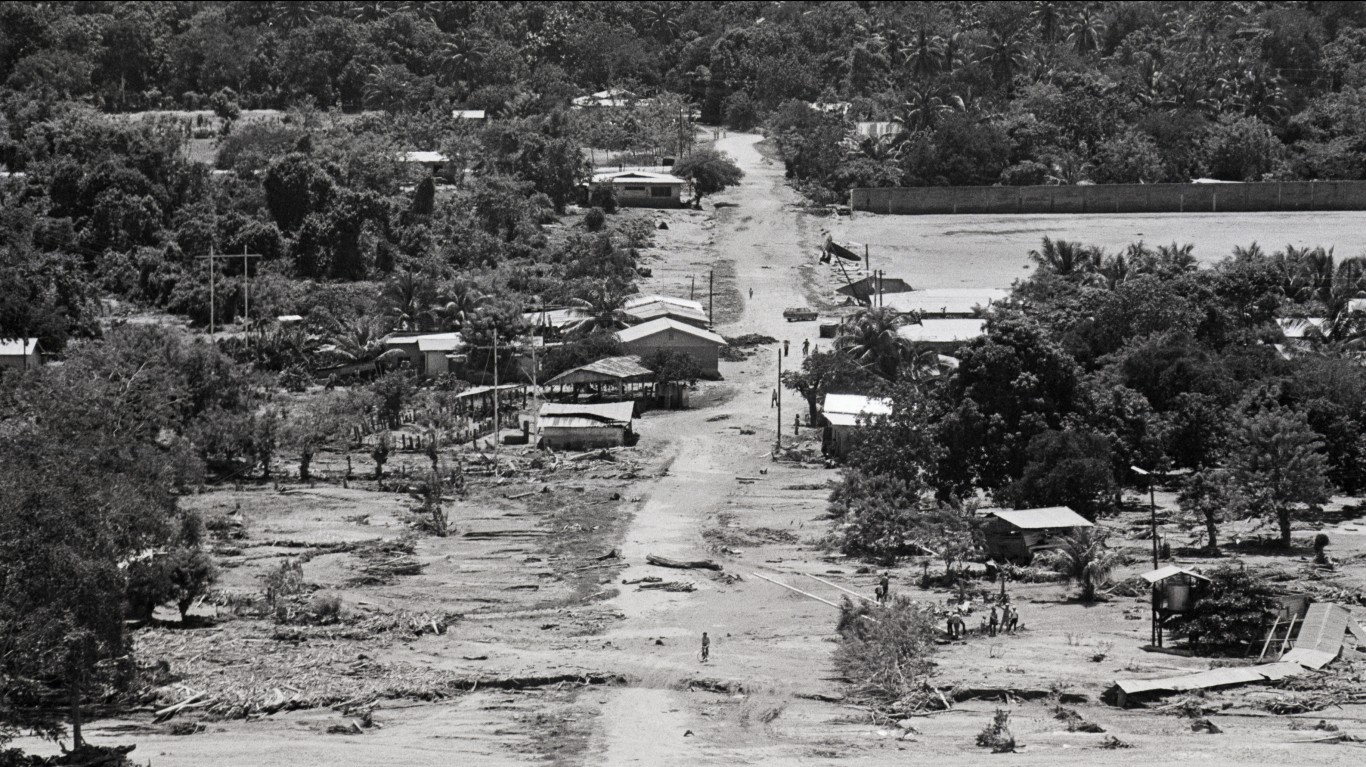
2. Storm (Fifi)
> Region: North America, Central America and the Caribbean
> No. of deaths: 8,000
> Year: 1974
> Country: Honduras
Hurricane Fifi originated as a tropical wave in the Caribbean and grew into a tropical storm and then a Category 2 hurricane as it hit Central America, making landfall and quickly dissipating in Belize. Honduras was hardest hit, overwhelmed by three days of rain, mudslides, flooding, and a catastrophic dam break that killed thousands.
The death toll is estimated at 8,000 to 10,000 people, with much of the loss of life attributable to people failing to evacuate low-lying villages in the face of government warning. Crops, including the valuable banana crop, were destroyed, 182 villages were wiped out, and 150,000 people were left homeless. Damages totalled $1.8 billion.
[in-text-ad-2]

1. Storm (Mitch)
> Region: North America, Central America and the Caribbean
> No. of deaths: 14,600
> Year: 1998
> Country: Honduras
Mitch began as a tropical wave in Africa and then strengthened into a tropical depression, a tropical storm, and, ultimately, a powerful Category 5 hurricane as it moved through the Caribbean and toward the coast of Central America. Though weakening as it hovered off of Honduras and finally making landfall, the slow-moving storm brought torrential rains, lasting for days.
The rainfall caused widespread flooding in Honduras and Nicaragua, killing thousands. Honduras lost 70% of its crops, and 20% of the population was left homeless. Most roads and bridges were destroyed, rendering maps useless and leaving segments of the population isolated, making relief efforts extremely difficult.
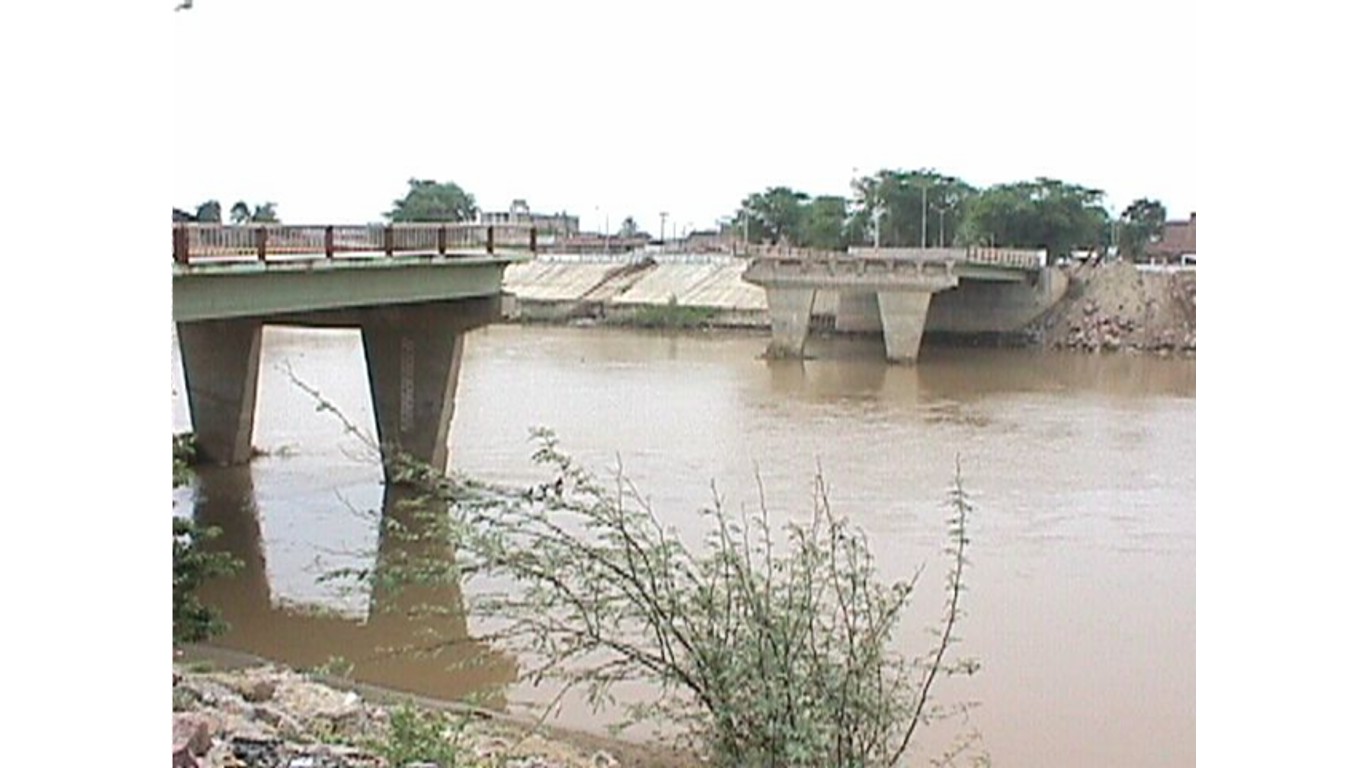
5. Storm
> Region: South America
> No. of deaths: 518
> Year: 1997
> Country: Peru
The weather impacts of the 1997-1998 El Nino phenomenon were felt around the world, with torrential rains to parts of Africa and Latin America and drought in Southeast Asia, leading to thousands of deaths, catastrophic crop loss, and massive infrastructure damage.
In Peru, rains caused flooding and mudslides and destroyed bridges, impeding aid as hundreds of thousands were forced from their homes. Cholera broke out in at least one community, and in Lima, water became contaminated, requiring fresh water to be brought in as part of the halting relief efforts.
[in-text-ad]
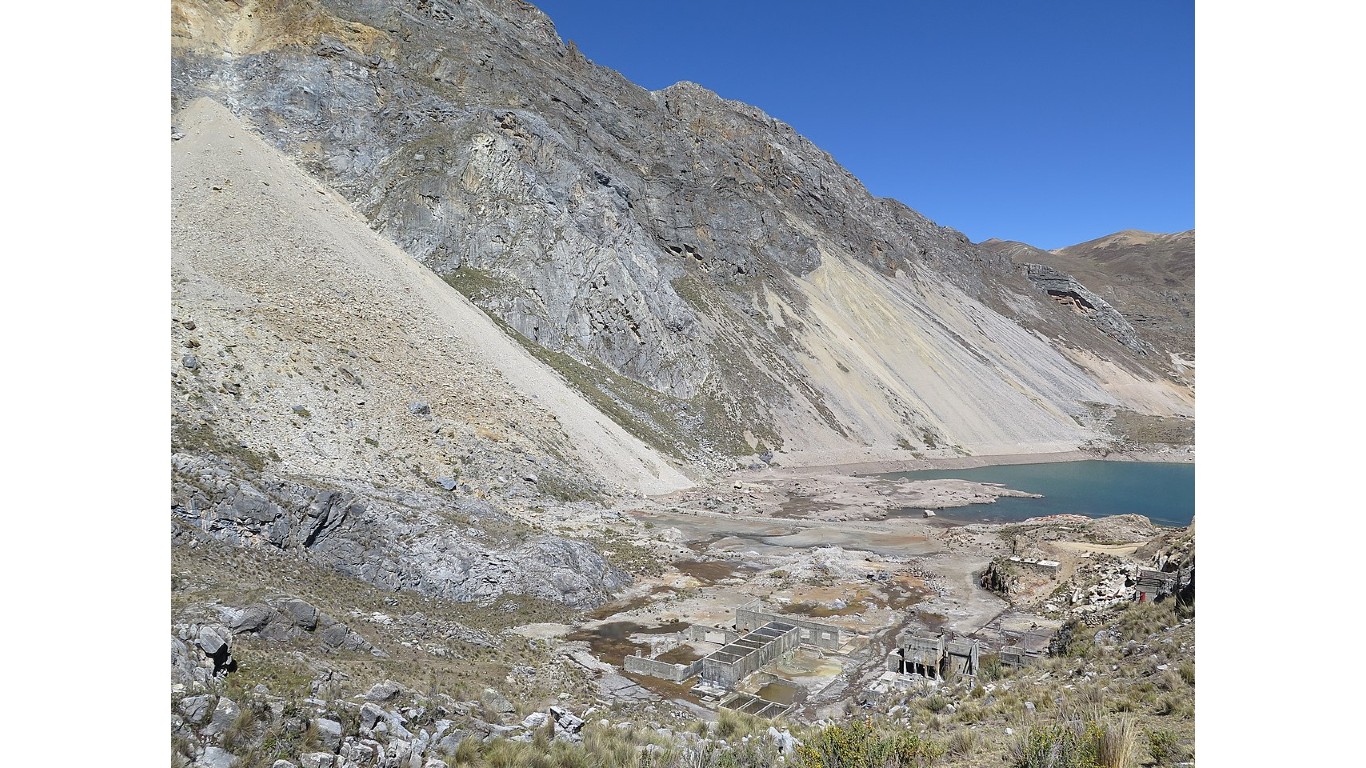
4. Landslide
> Region: South America
> No. of deaths: 600
> Year: 1971
> Country: Peru
In March of 1971, on the heels of Peru’s deadly earthquake in 1970, tragedy struck a remote mining camp, when a small earthquake shook loose the top of a mountain into a lake, touching off a flood and an avalanche of water, snow, rocks, and dirt. At 110,000 feet in altitude, and 8 hours travel time form the nearest town, the tiny community of Chungar was mostly destroyed and 600 people, out of a population of 1,000, were killed. The main road and bridge leading to the camp were buried, making rescue efforts torturous.

3. Landslide
> Region: South America
> No. of deaths: 640
> Year: 1987
> Country: Colombia
In September of 1987, after several days of rain, an avalanche of mud and rock struck an impoverished community known as Villa Tina outside of Medellin, Colombia’s second largest city. Most of the dead were killed in their humble homes, shacks built from scrap lumber, tar paper, and tires. Some were buried under 36 feet of mud. The continuing rain event and the threat of more landslides hampered rescue and relief efforts.
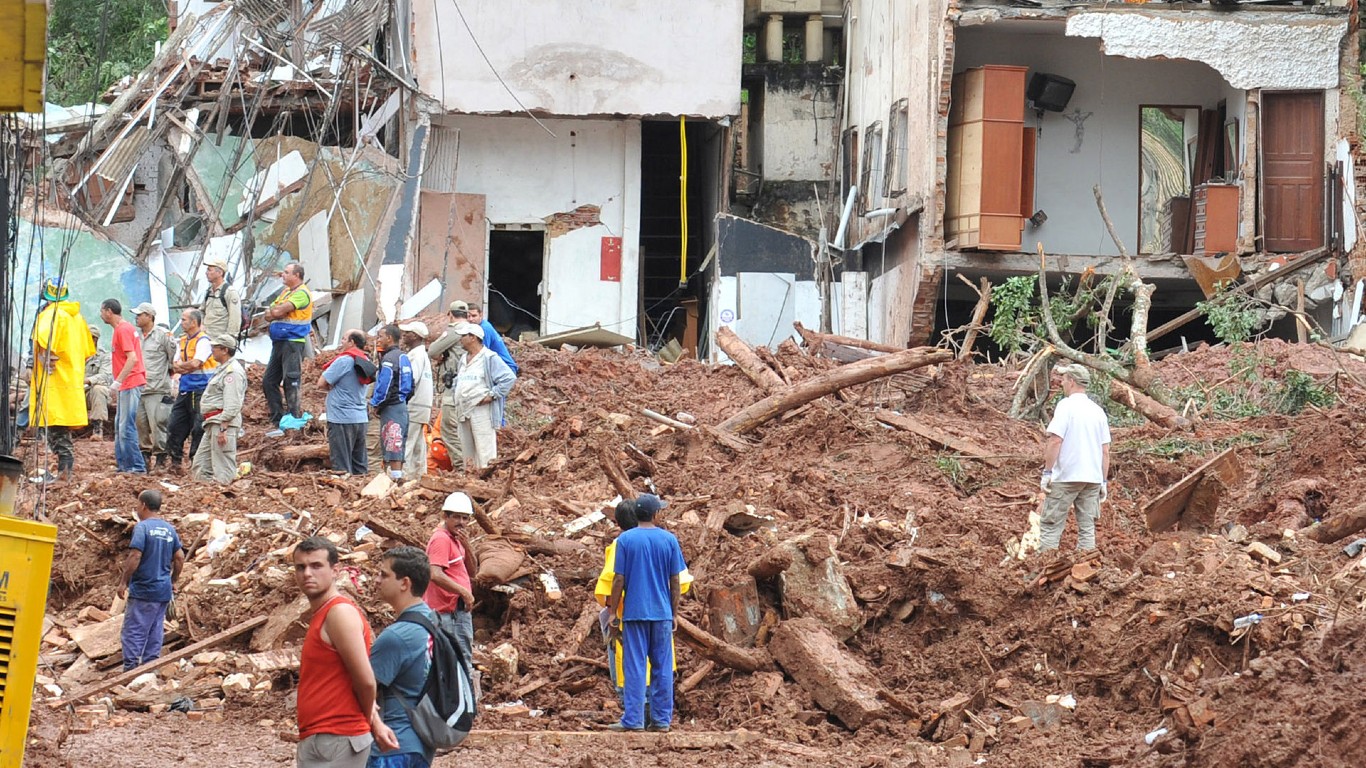
2. Flood
> Region: South America
> No. of deaths: 900
> Year: 2011
> Country: Brazil
In just 2 days, Jan. 11 and 12 of 2011, the mountainous region of Rio de Janeiro experienced more rainfall than is usually expected for the entire month, triggering deadly floods and mudslides. Though the stricken region includes tourist destinations, a district of luxury homes, and a university campus, most deaths occurred in neglected slums, leading some to refer to the disaster as man-made.
[in-text-ad-2]
1. Flood
> Region: South America
> No. of deaths: 30,000
> Year: 1999
> Country: Bolivarian Republic of Venezuela
Venezuela’s rainy season usually extends from May to October, making the extreme rainfall in December of 1999 very unusual. Moderate rains in early December, followed by three days of heavy rains mid-month, caused hundreds of landslides in the mountains north of Caracas and devastating flash floods and debris flows in the state of Vargas along the coast. Up to 10% of the population of Vargas was killed, with entire villages wiped out and the region’s infrastructure destroyed.
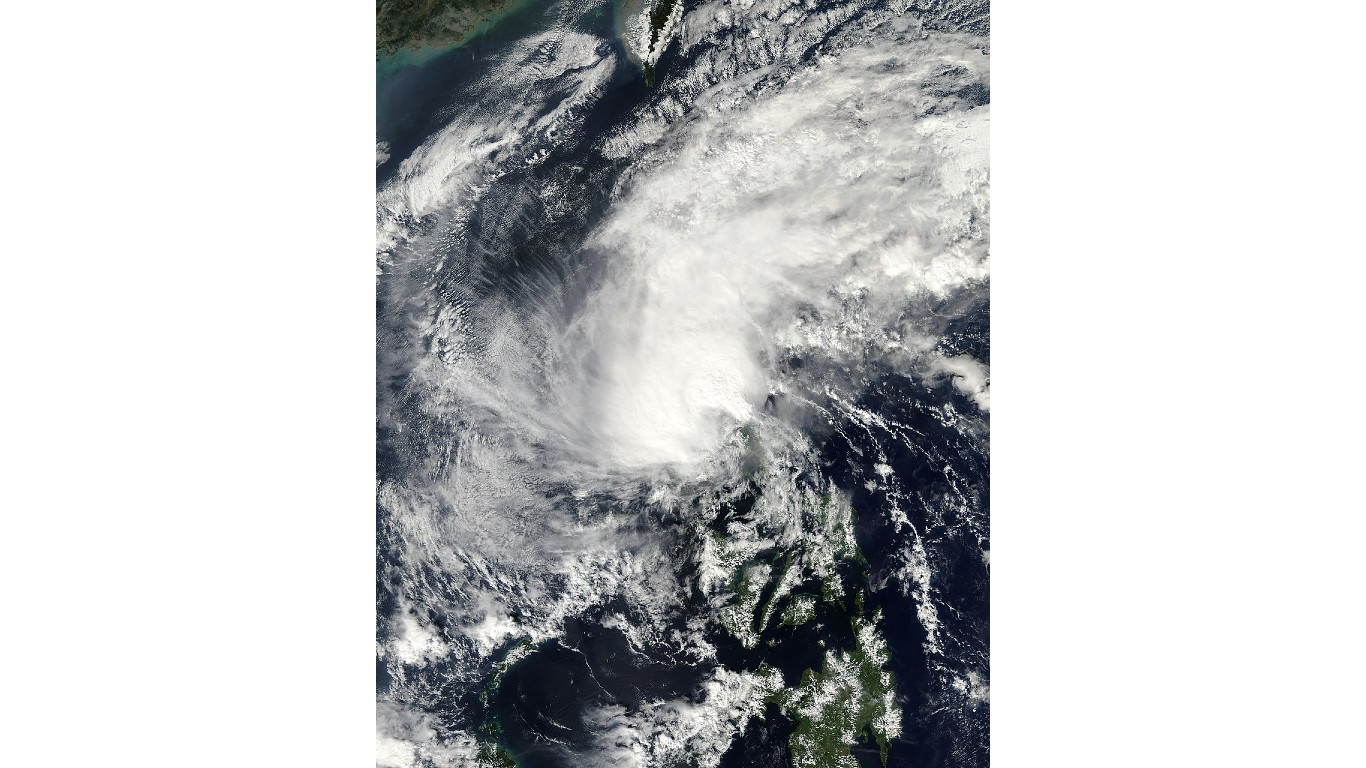
5. Storm (Winnie)
> Region: South-West Pacific
> No. of deaths: 1,619
> Year: 2004
> Country: Philippines
The 2004 Pacific typhoon season was one of the most active in history, second only to 1997, lasting from April to December, well beyond the usual May to October period. Tropical depression Winnie hit Luzon in November as a relatively weak storm among dozens that year, but became one of the most deadly worldwide, second only to Atlantic Hurricane Jeanne. Despite the late date, Winnie was followed by typhoon Nanmadol, which caused an additional 77 deaths in the Philippines.
[in-text-ad]
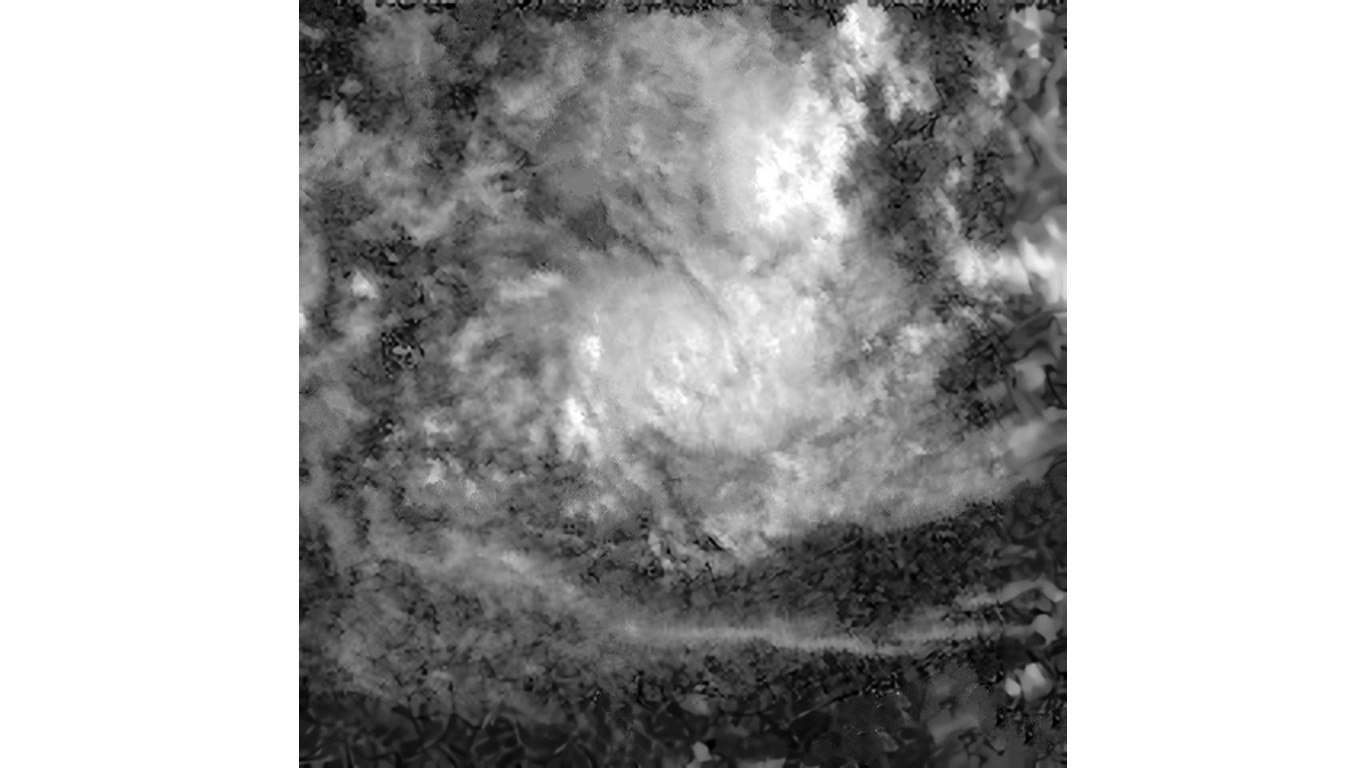
4. Storm
> Region: South-West Pacific
> No. of deaths: 1,650
> Year: 1973
> Country: Indonesia
The deadliest cyclone on record in the Southern Hemisphere hit the island of Flores in Indonesia in April of 1973, causing flash flooding and extensive damage across the island. Among cyclone’s victims were 1,500 fishermen on the neighboring island of Palu’e and all 24 crewmembers of a 500 ton freighter that capsized in the storm.
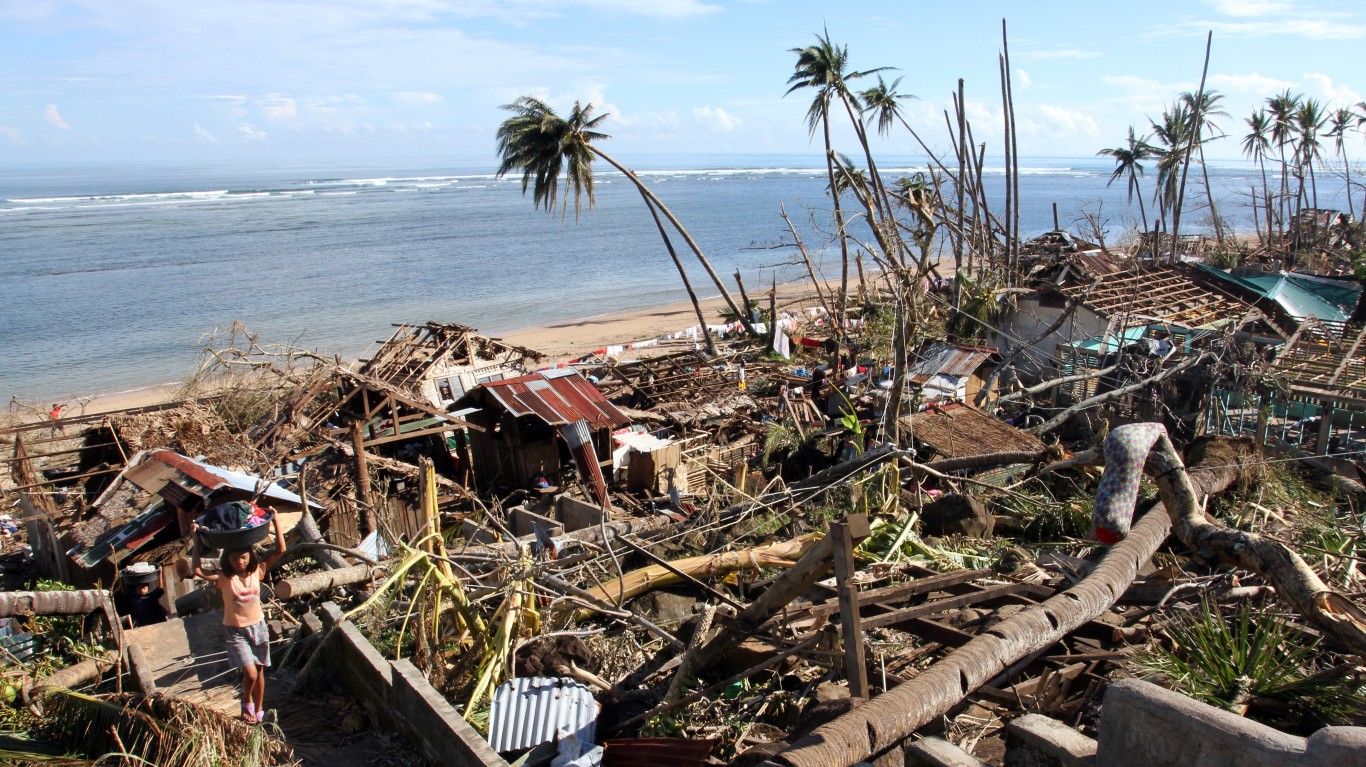
3. Storm (Bopha)
> Region: South-West Pacific
> No. of deaths: 1,901
> Year: 2012
> Country: Philippines
Bopha, a Category 5 hurricane, was the strongest ever to hit the Philippines until Superstorm Haiyan struck the following year. It followed the deadly Tropical Storm Washi just the year before, which had killed 1,500 people and from which the population had not recovered.
With torrential rains and winds up to 174 mph, Bopha flattened villages, cut off power and communications, and left thousands homeless.
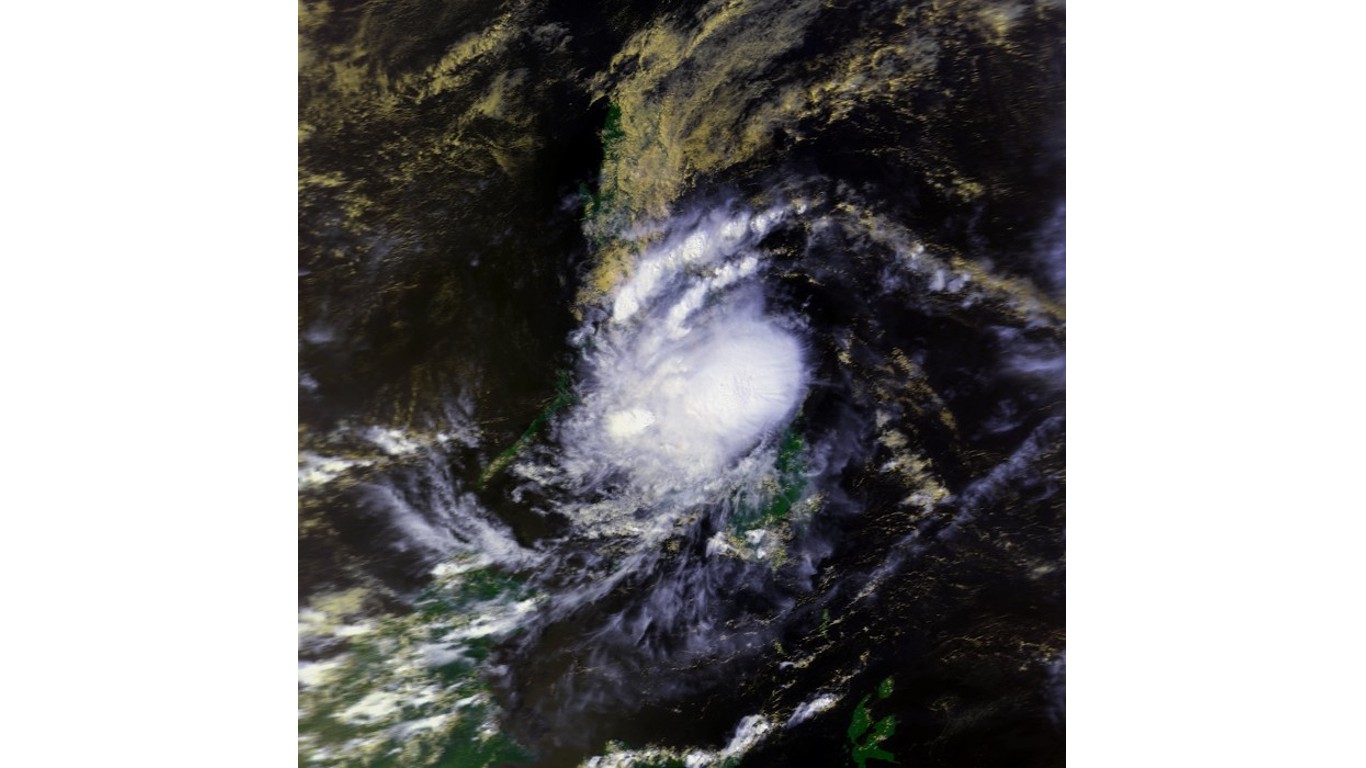
2. Storm (Thelma)
> Region: South-West Pacific
> No. of deaths: 5,956
> Year: 1991
> Country: Philippines
Of the 31 cyclones in the infamous 1991 Pacific storm season, Thelma was the deadliest. While it was not a strong storm compared with others that year, and did not produce particularly high winds, Thelma dumped heavy rain across the Philippines over the course of 24 hours, causing dam failures, flooding, and landslides. An 8 foot storm surge and subsequent flooding destroyed three-quarters of the port city of Ormoc and were responsible for half the Philippine deaths. The island on which Ormoc sits had been mostly de-forested, leaving it vulnerable to horrific flooding.
[in-text-ad-2]
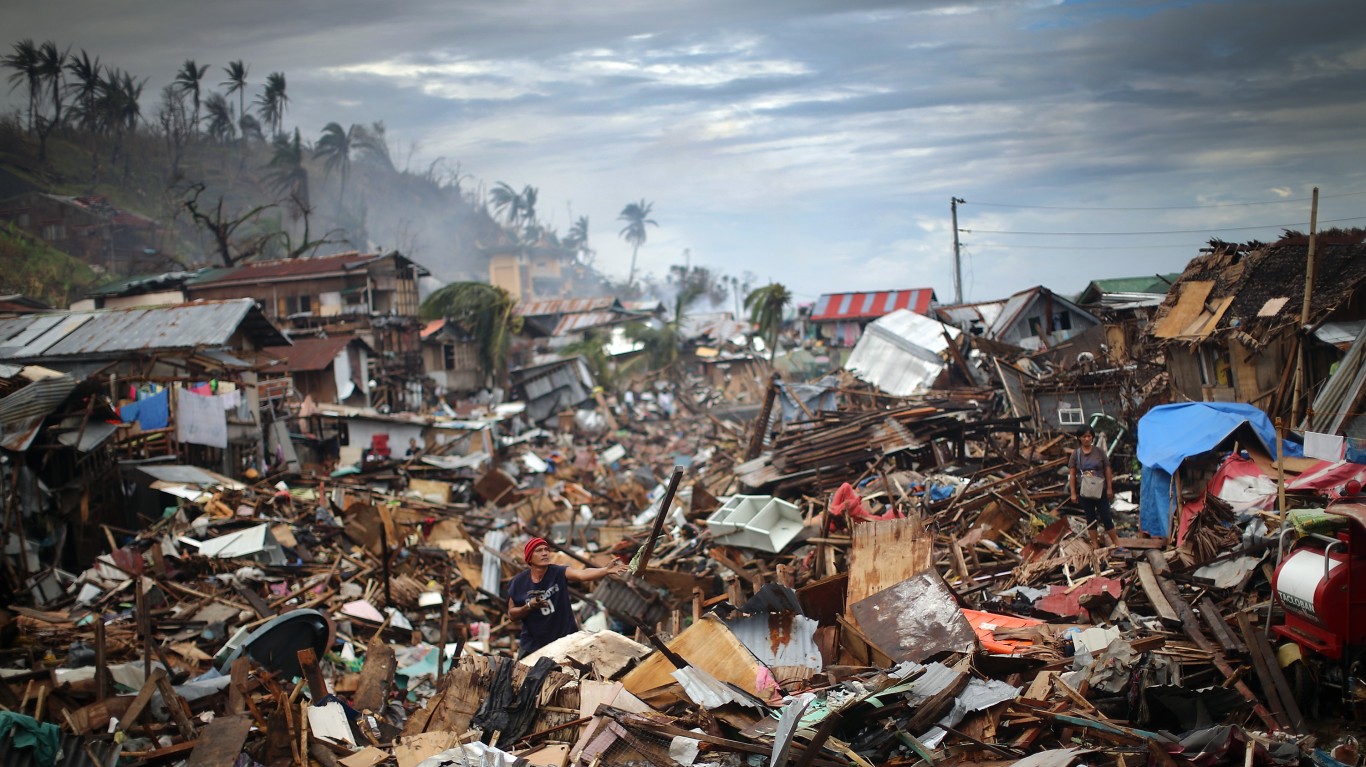
1. Storm (Haiyan)
> Region: South-West Pacific
> No. of deaths: 7,354
> Year: 2013
> Country: Philippines
Typhoon Haiyan, also known as Super Typhoon Yolanda, was the strongest storm of 2013, and one of the strongest and deadliest on record, wreaking destruction in Southeast Asia and, particularly, the Philippines. Wind speeds exceeded 185 mph, but the greatest damage was caused by storm surge. Tacloban City and the islands of Leyte were hardest hit with some areas being washed away, along with human victims. Bodies were still being discovered in 2014.
Travel Cards Are Getting Too Good To Ignore (sponsored)
Credit card companies are pulling out all the stops, with the issuers are offering insane travel rewards and perks.
We’re talking huge sign-up bonuses, points on every purchase, and benefits like lounge access, travel credits, and free hotel nights. For travelers, these rewards can add up to thousands of dollars in flights, upgrades, and luxury experiences every year.
It’s like getting paid to travel — and it’s available to qualified borrowers who know where to look.
We’ve rounded up some of the best travel credit cards on the market. Click here to see the list. Don’t miss these offers — they won’t be this good forever.
Thank you for reading! Have some feedback for us?
Contact the 24/7 Wall St. editorial team.
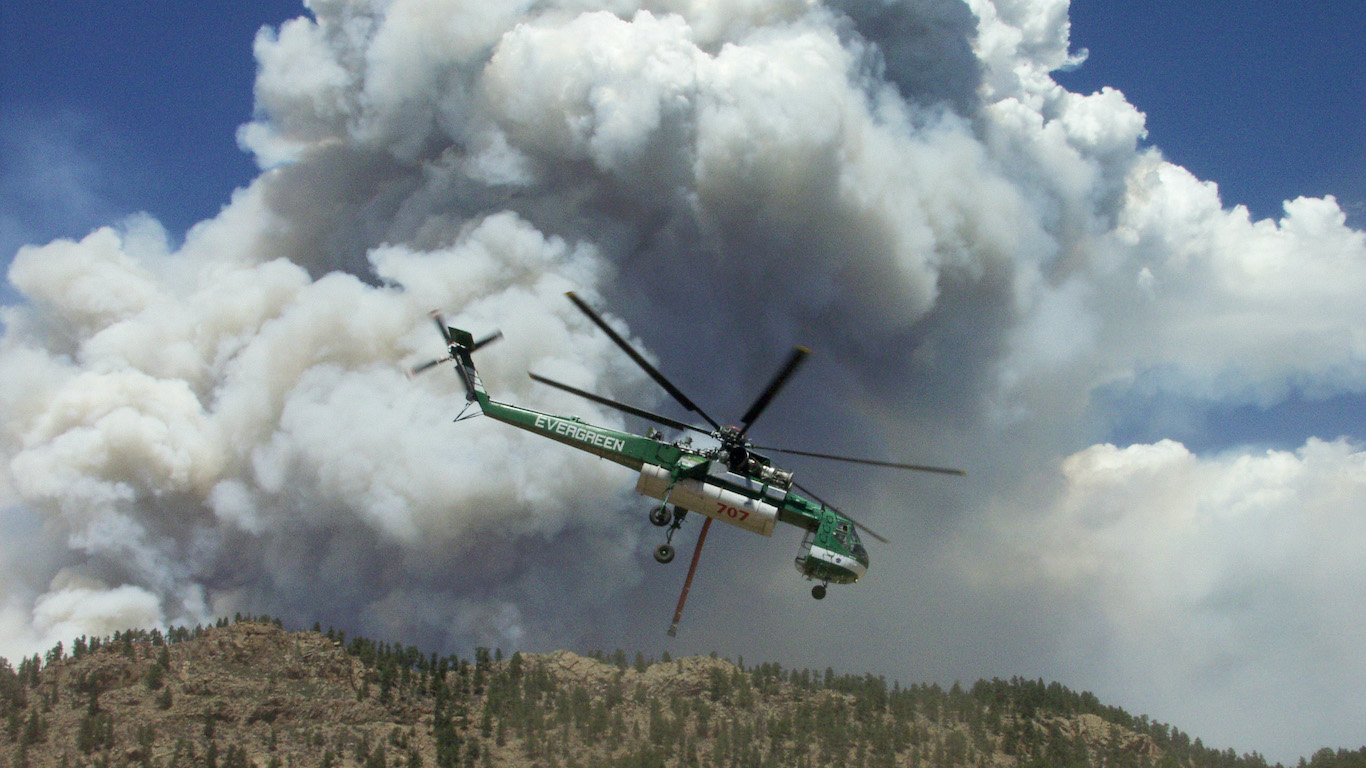 24/7 Wall St.
24/7 Wall St.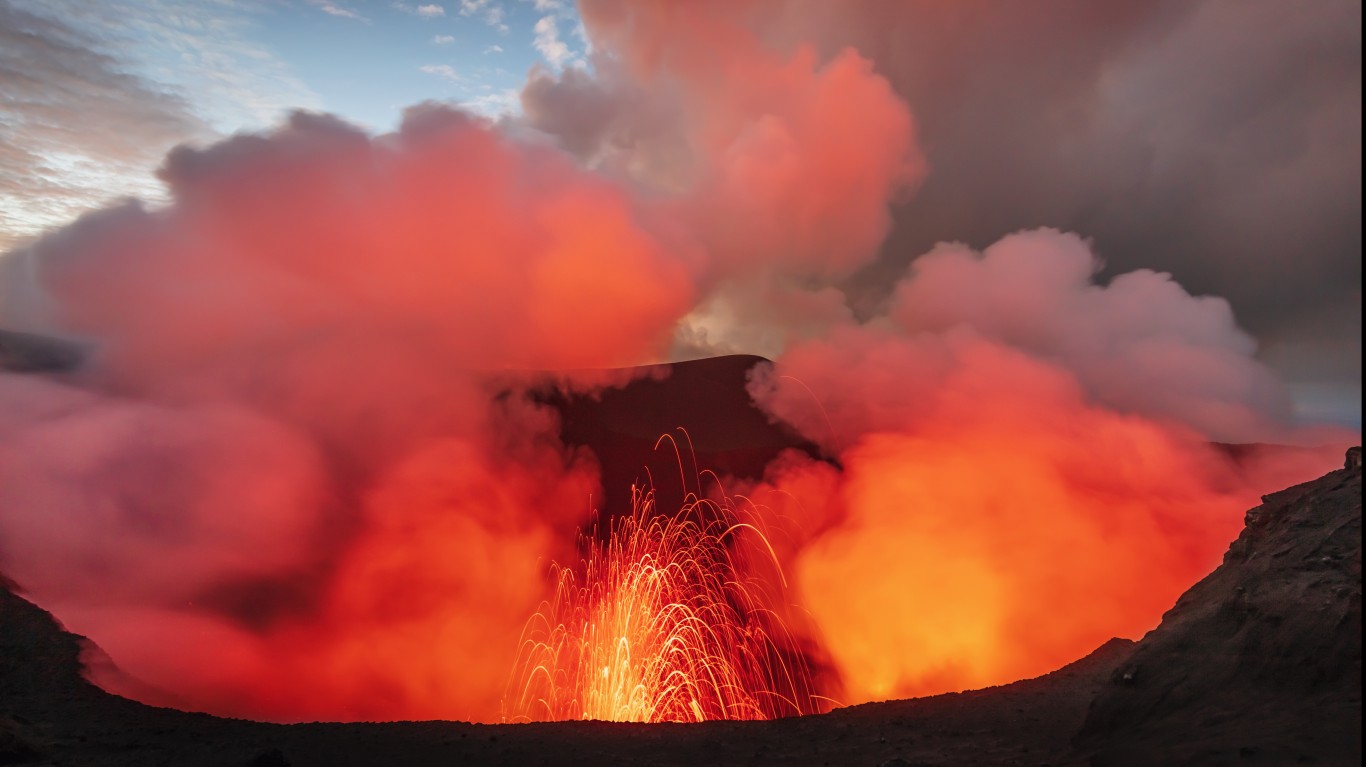 24/7 Wall St.
24/7 Wall St.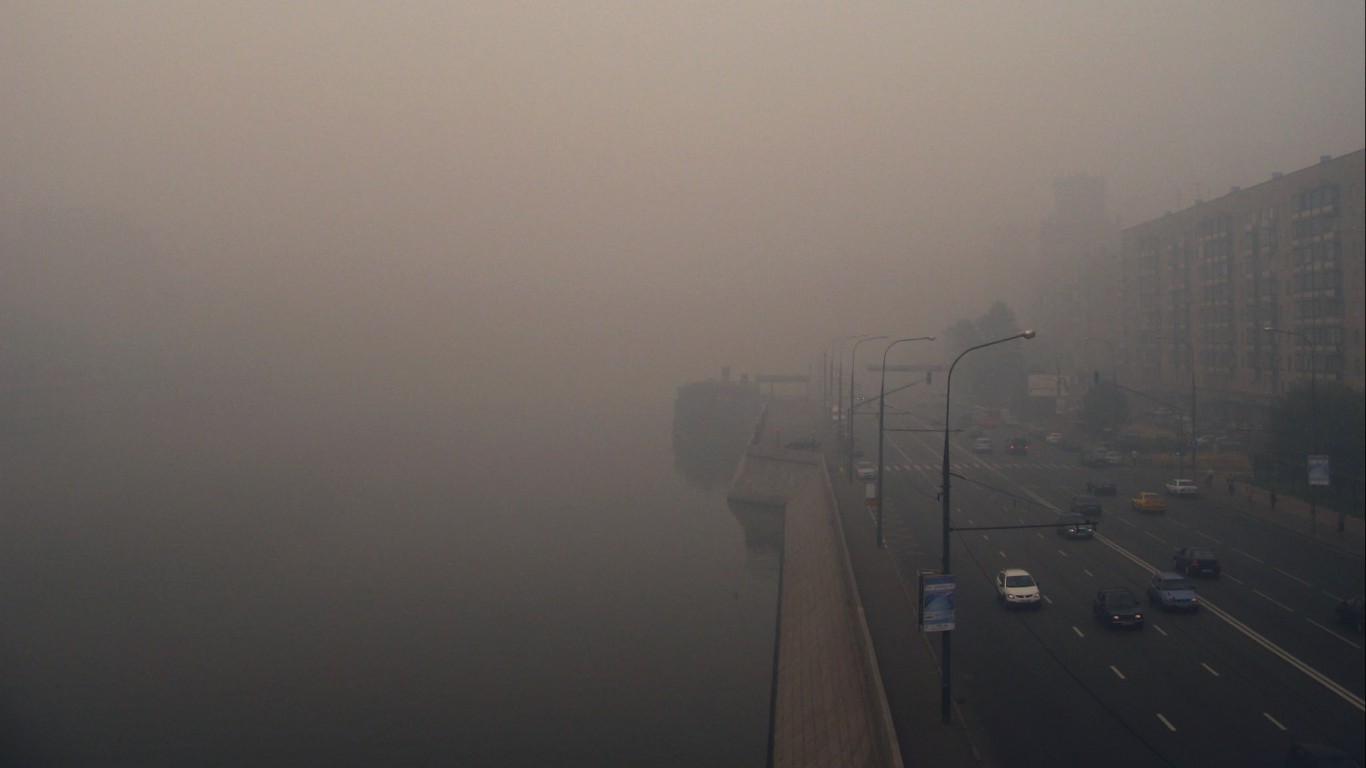
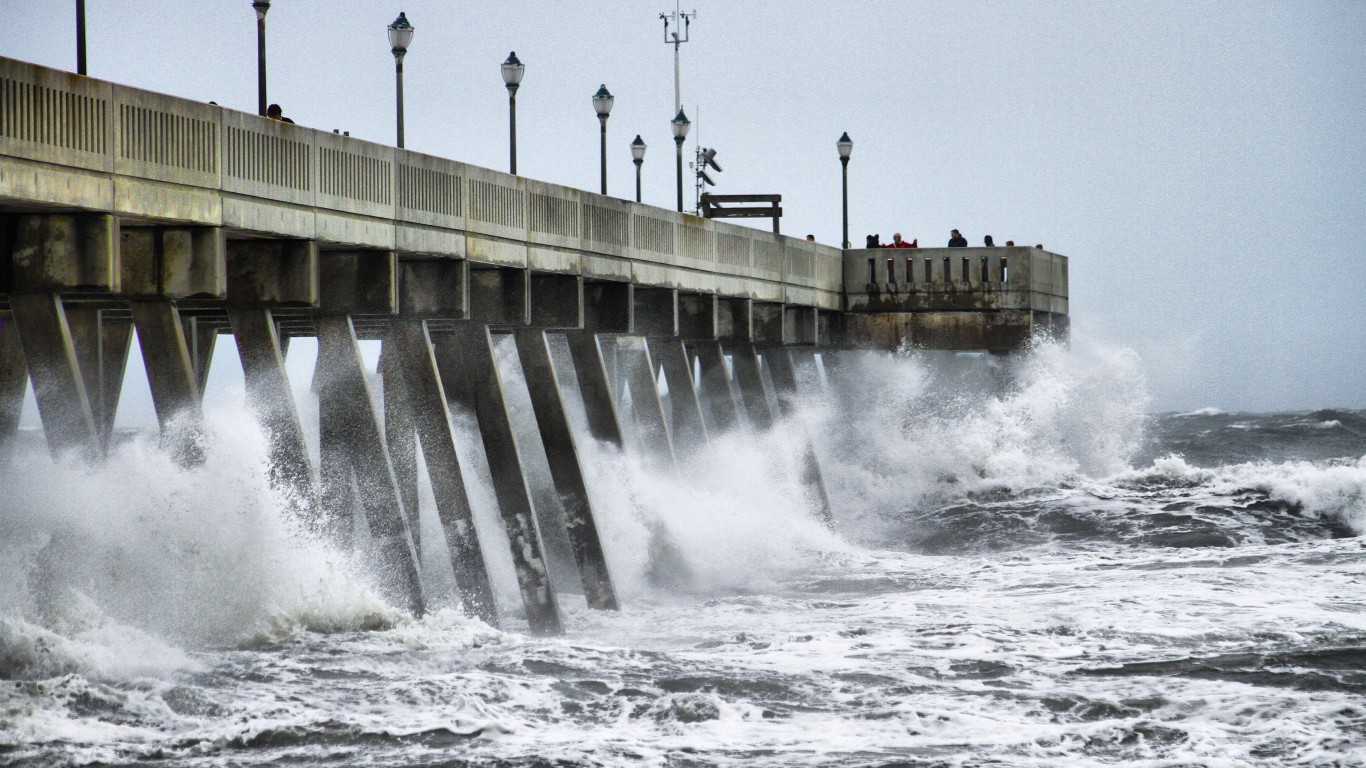 24/7 Wall St.
24/7 Wall St.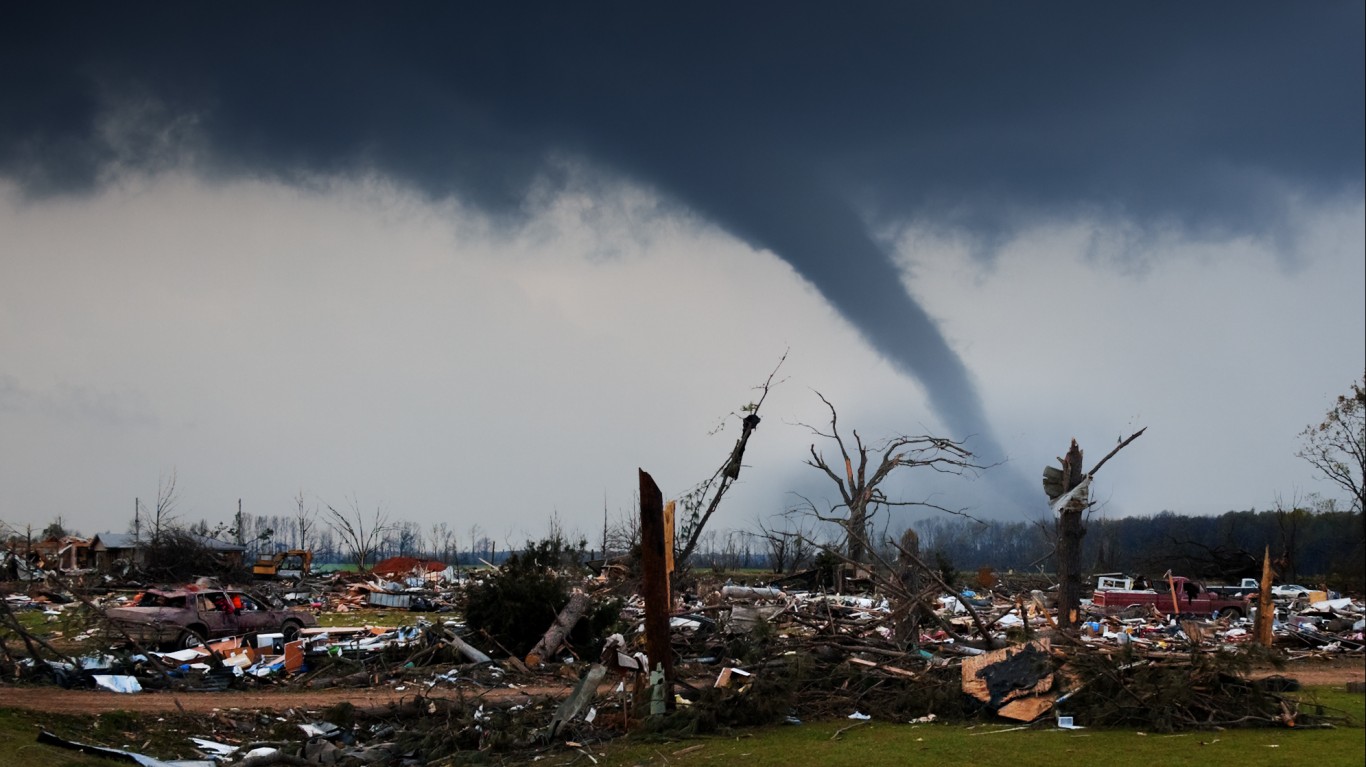 24/7 Wall St.
24/7 Wall St.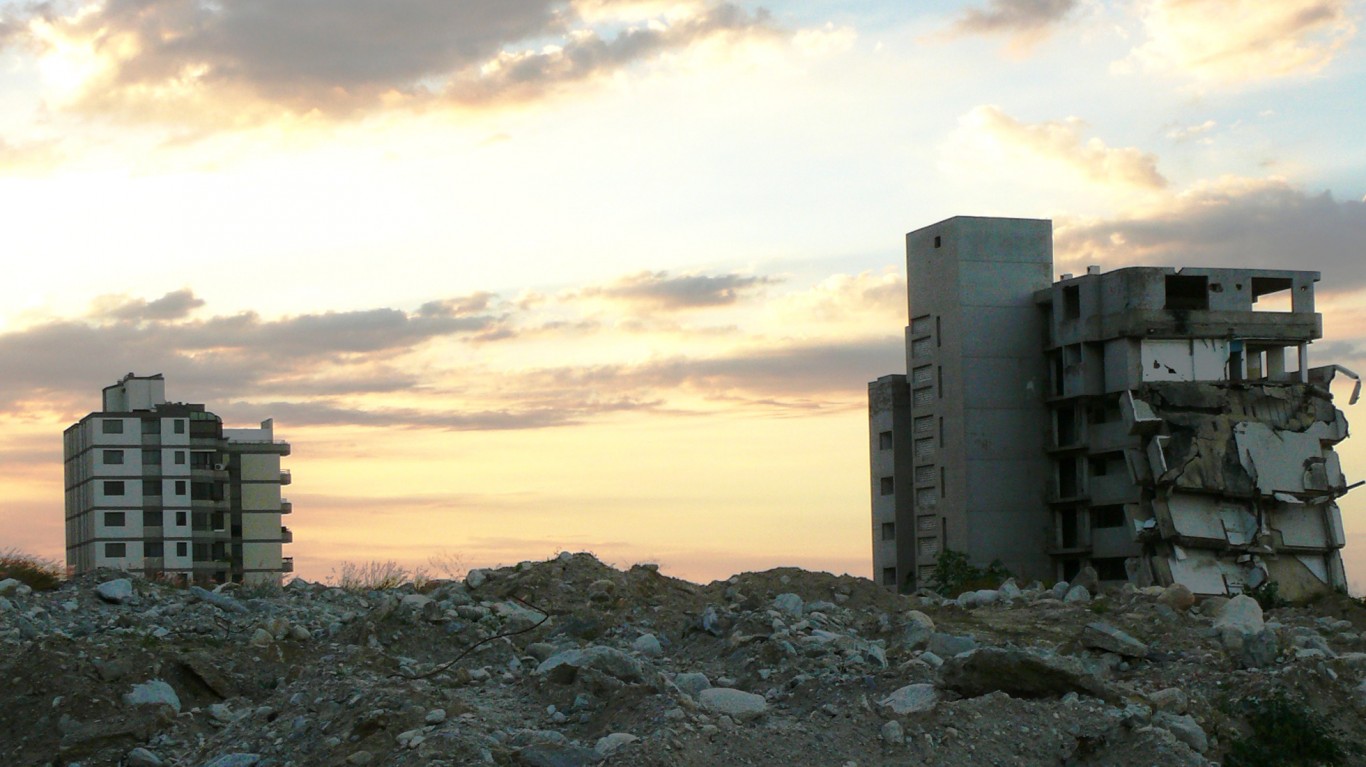
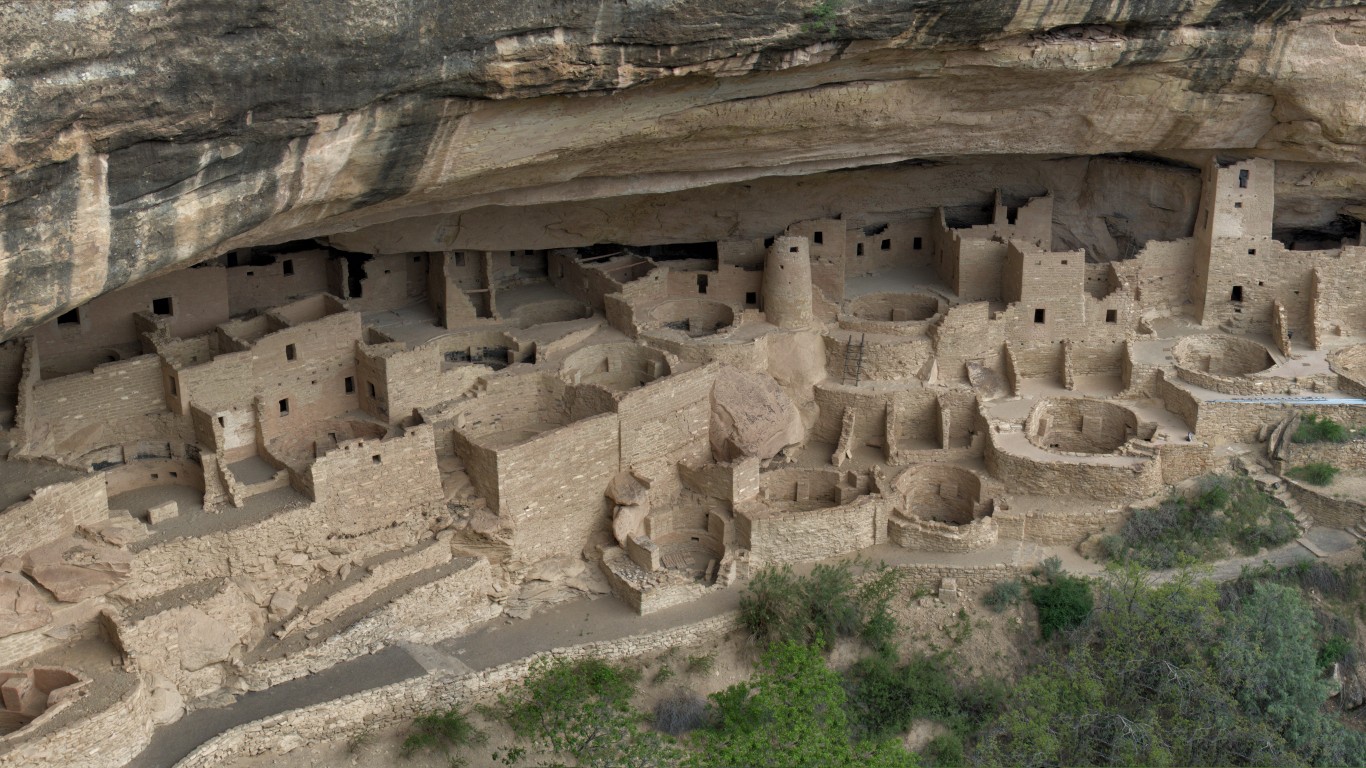 24/7 Wall St.
24/7 Wall St.